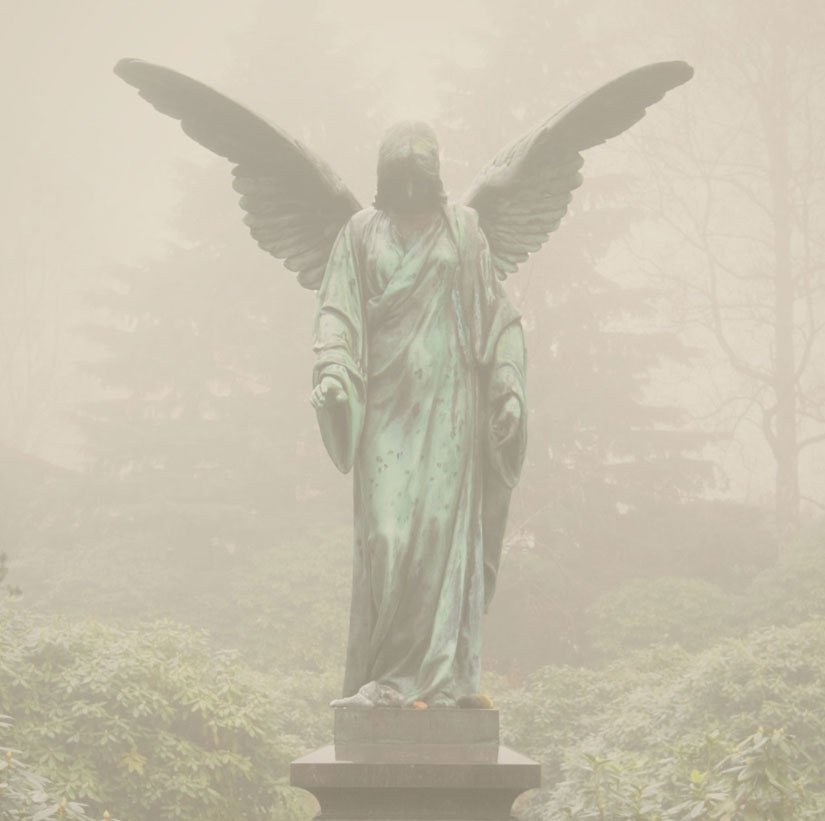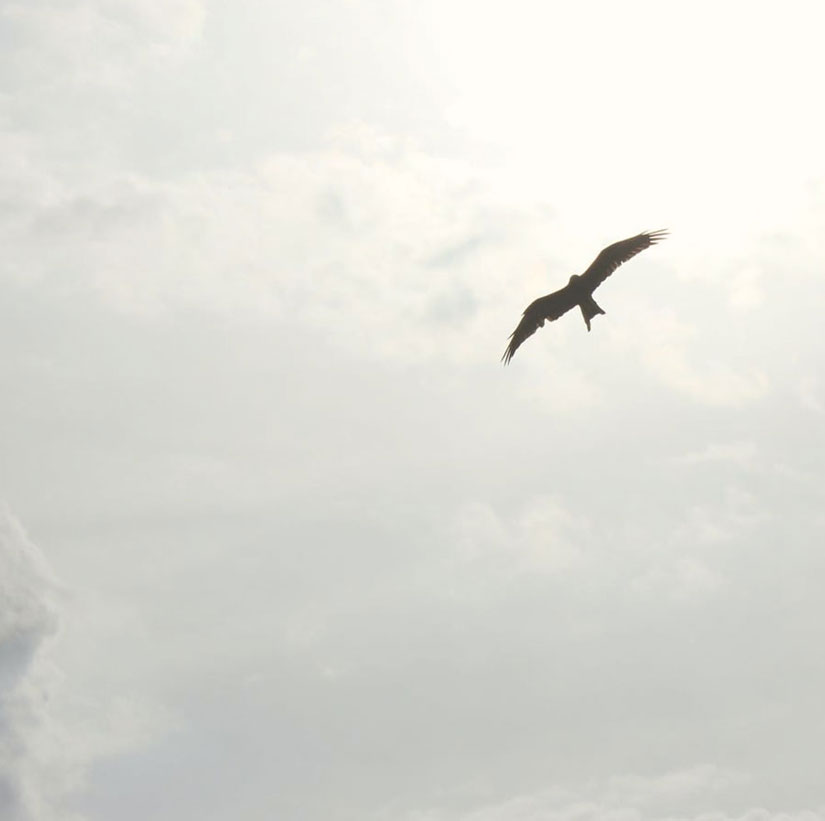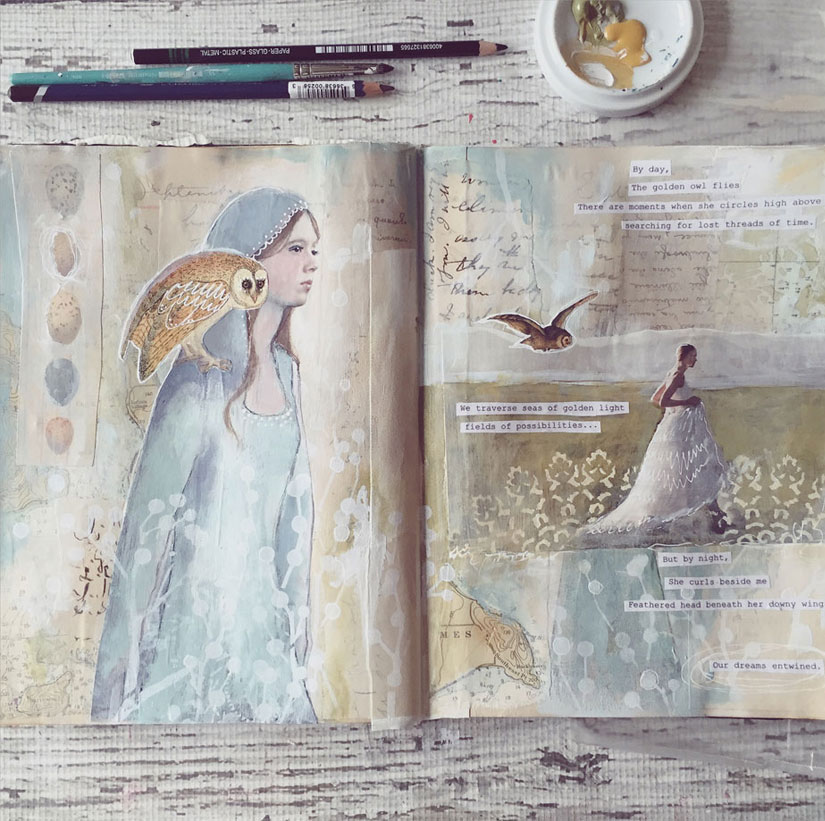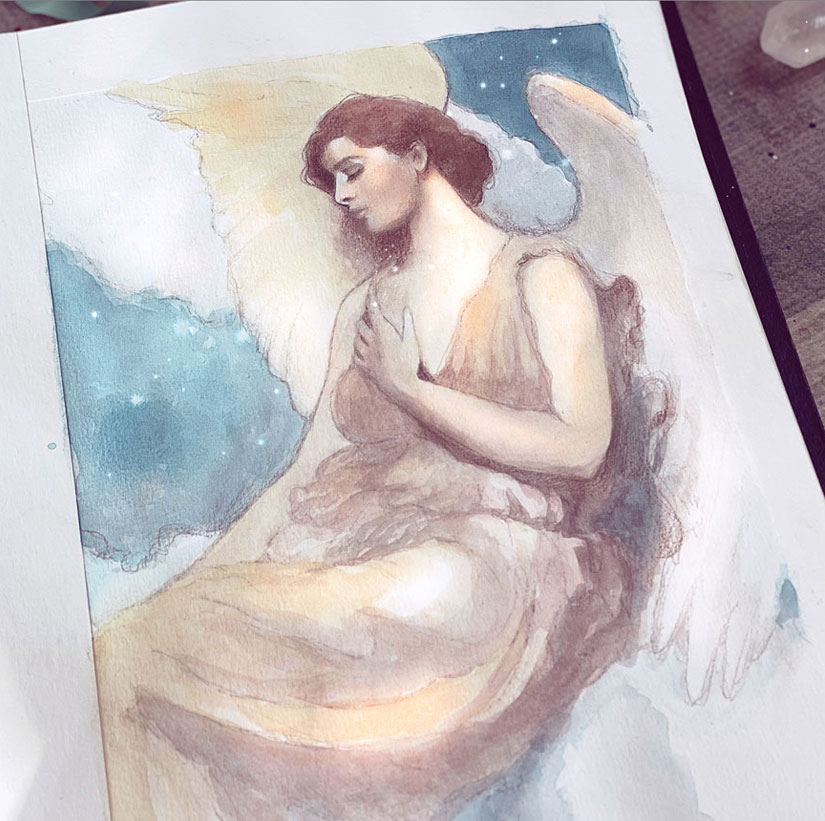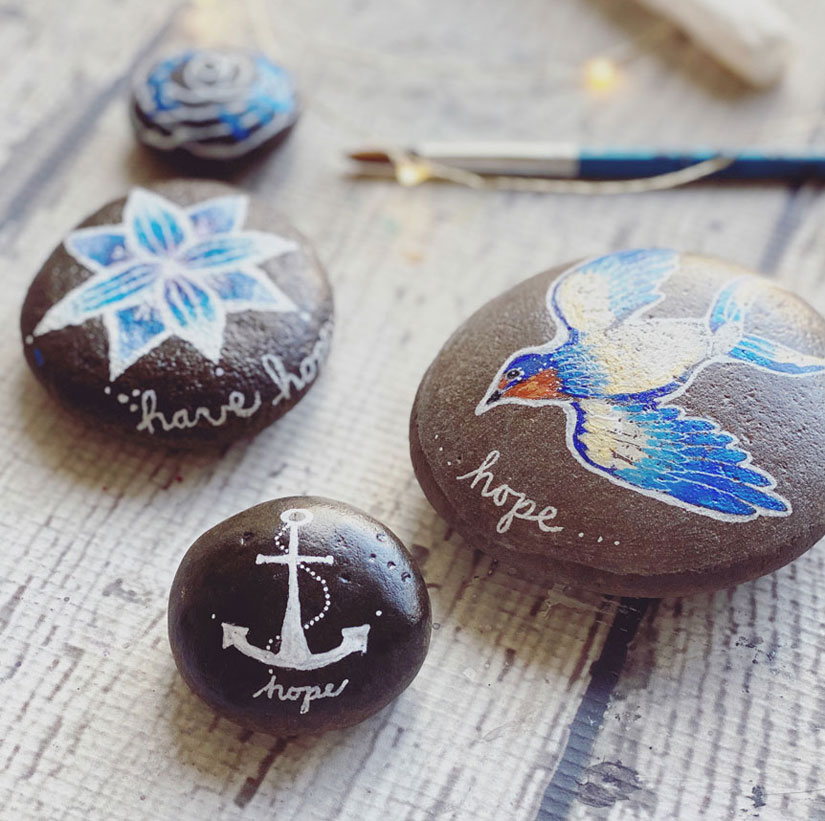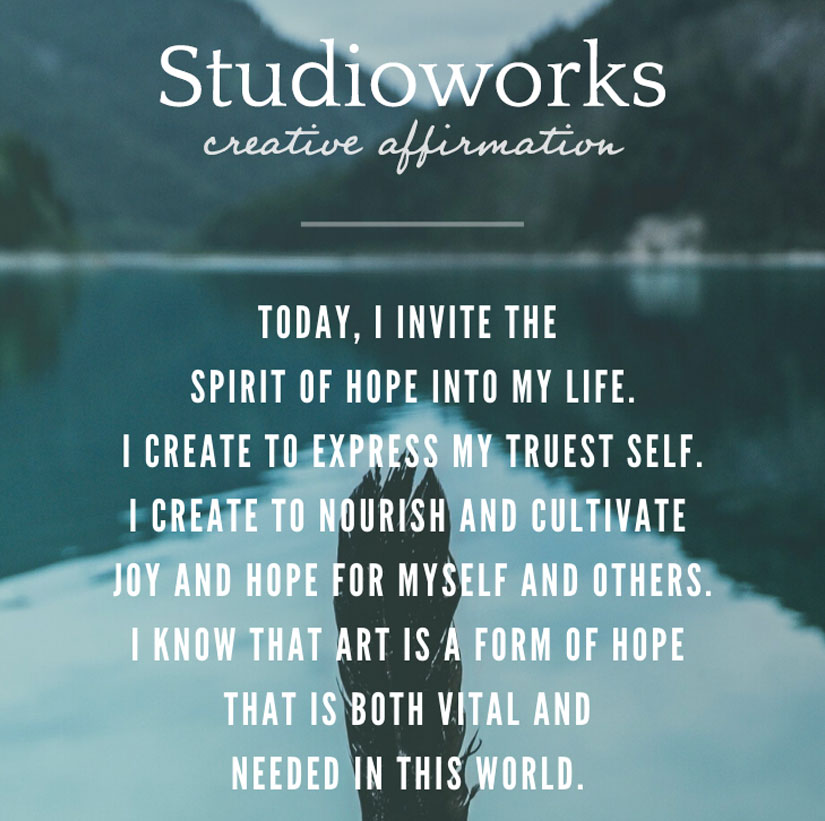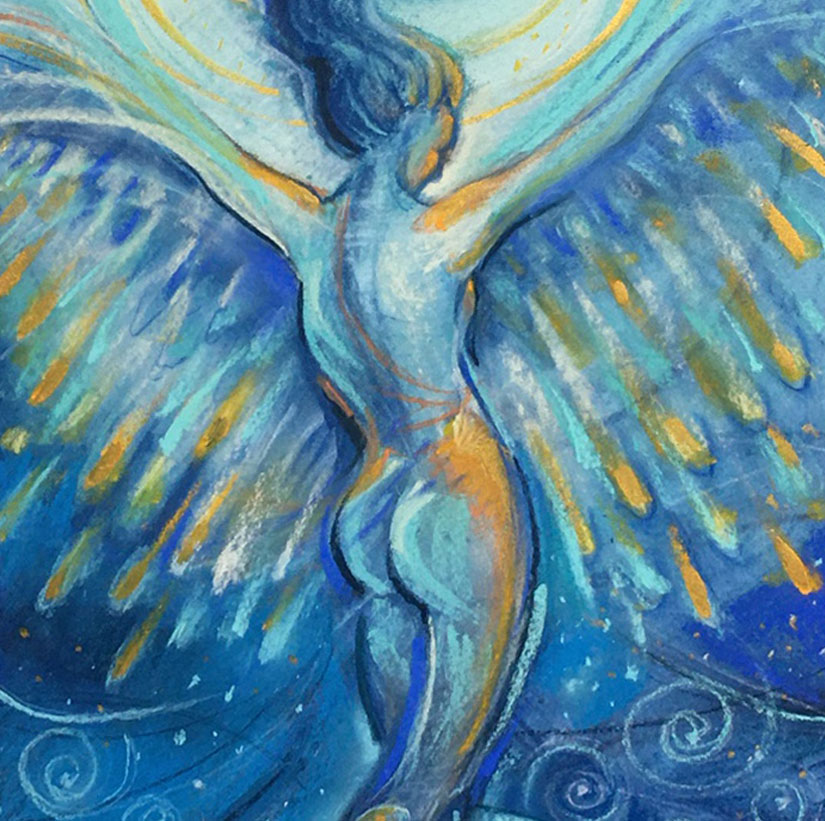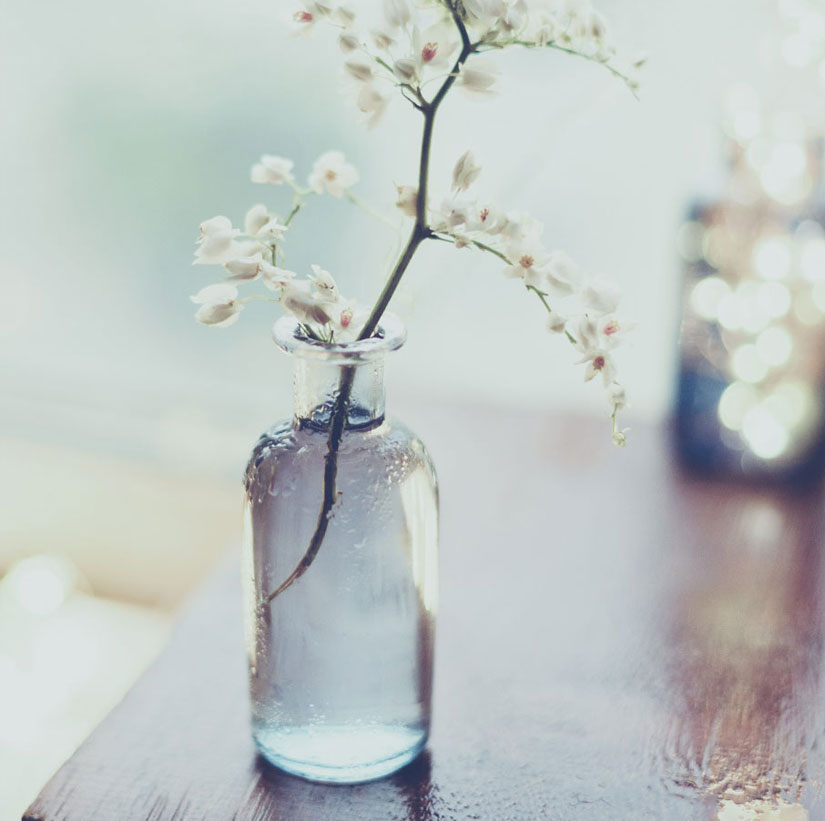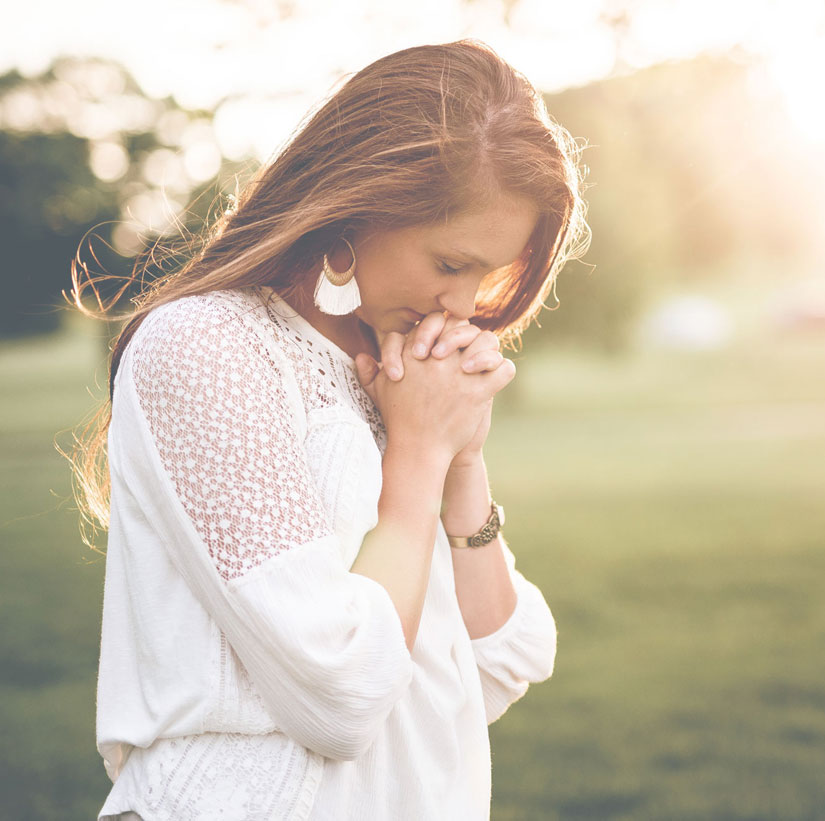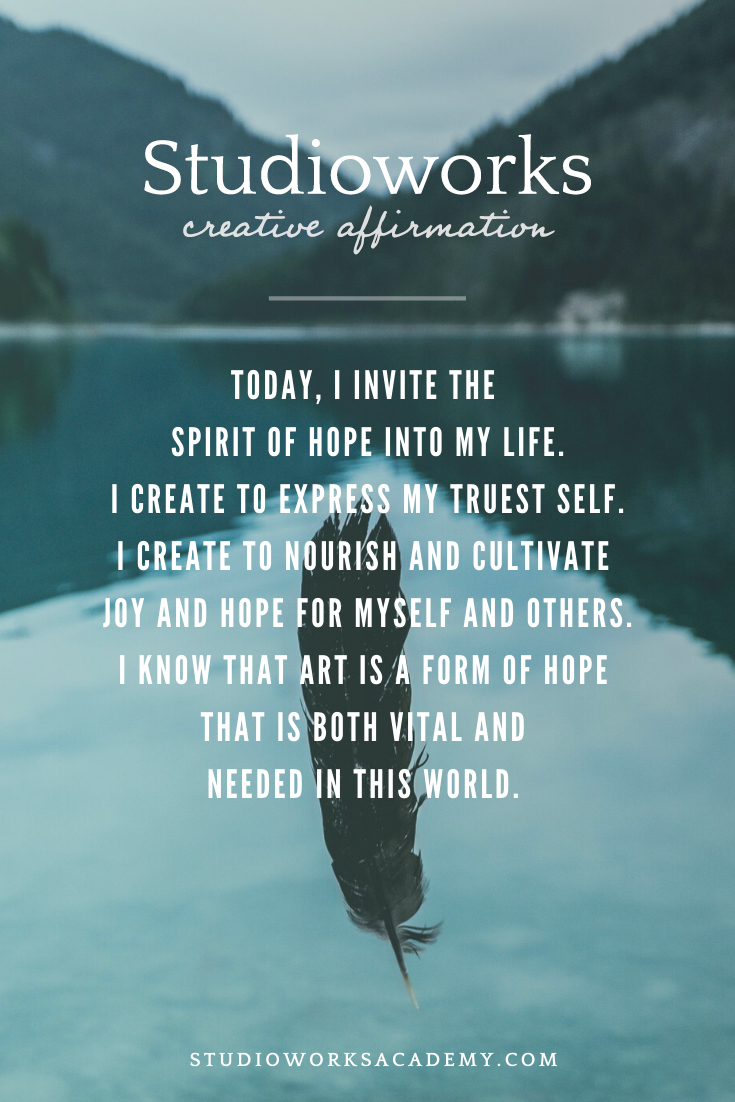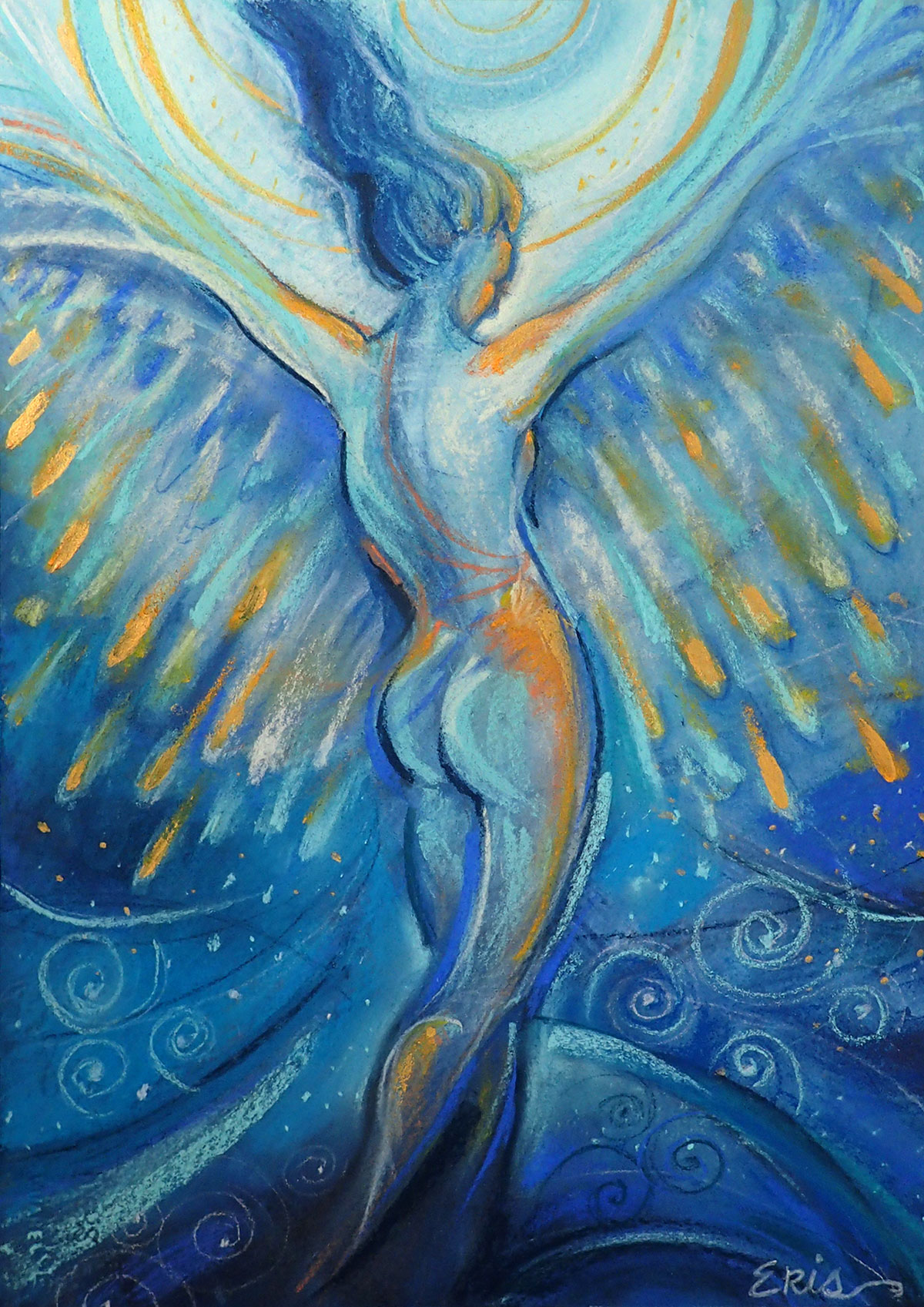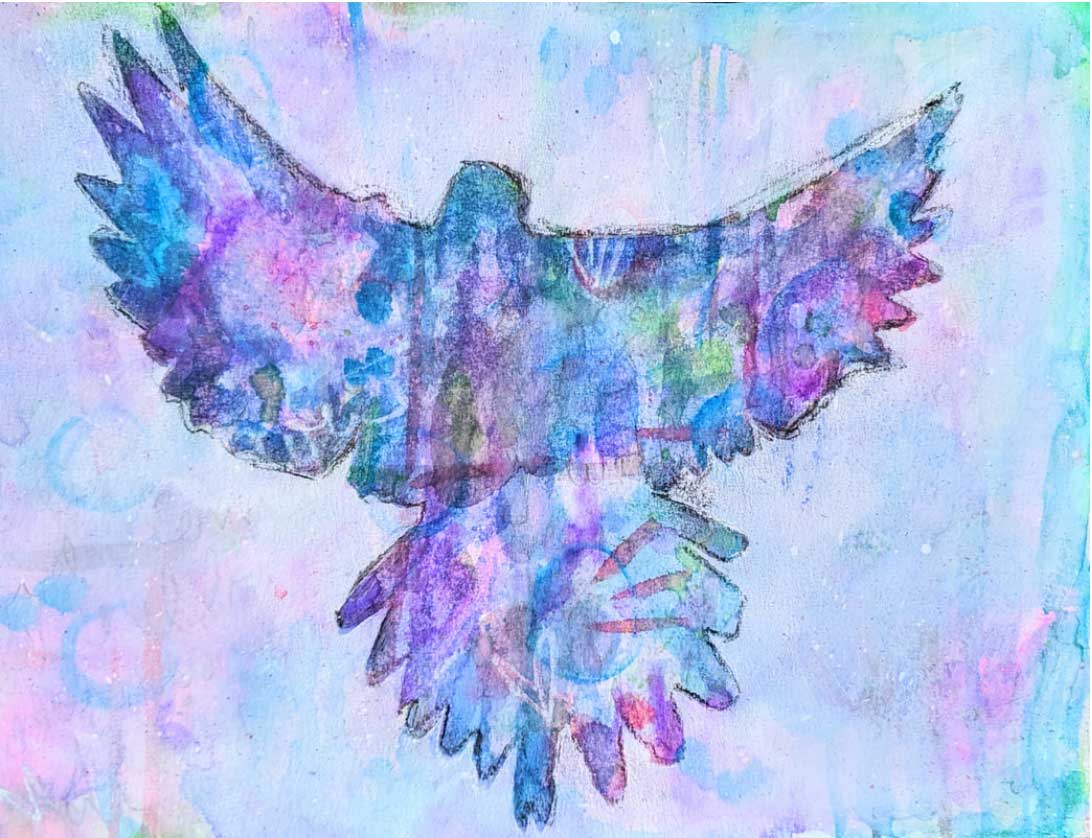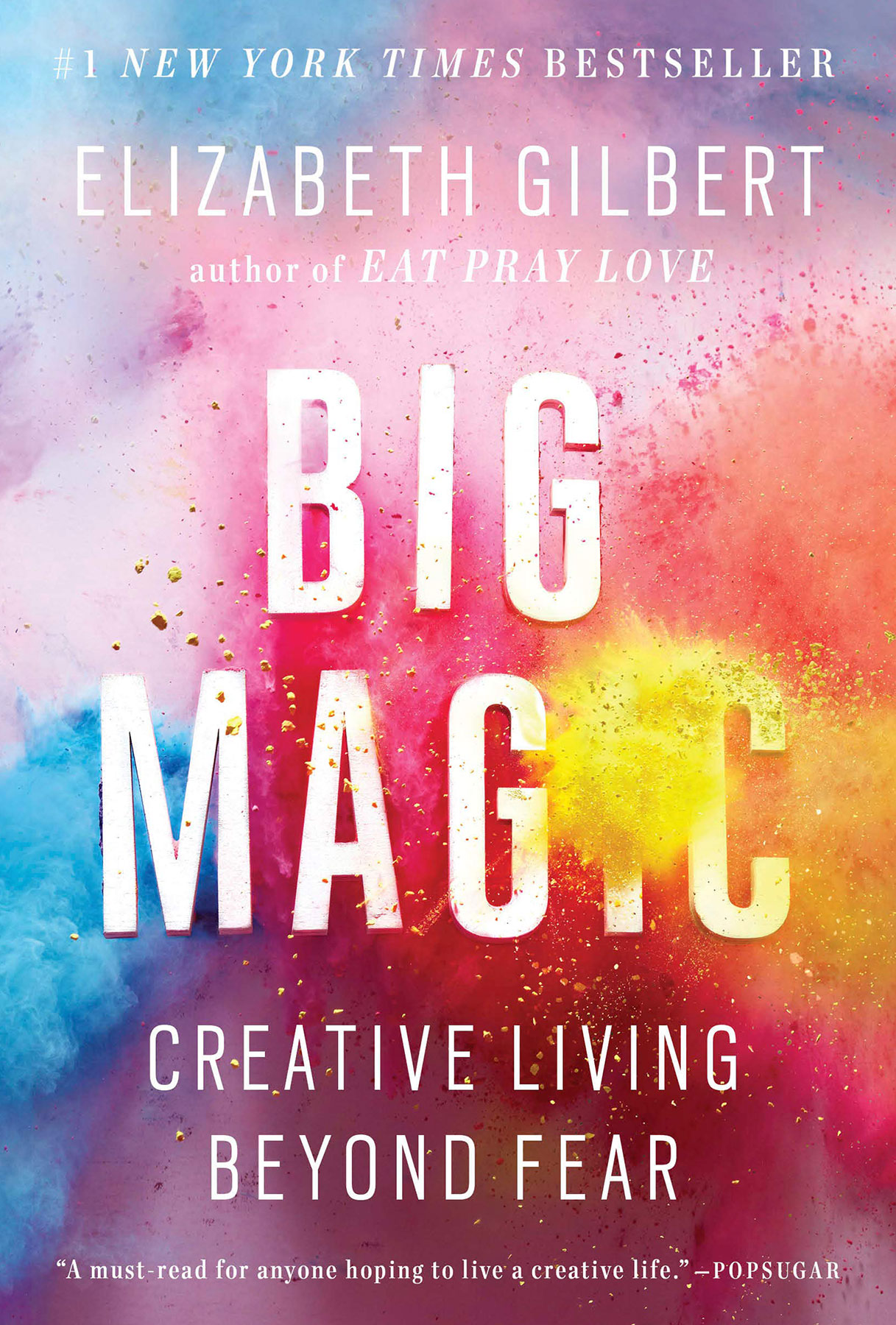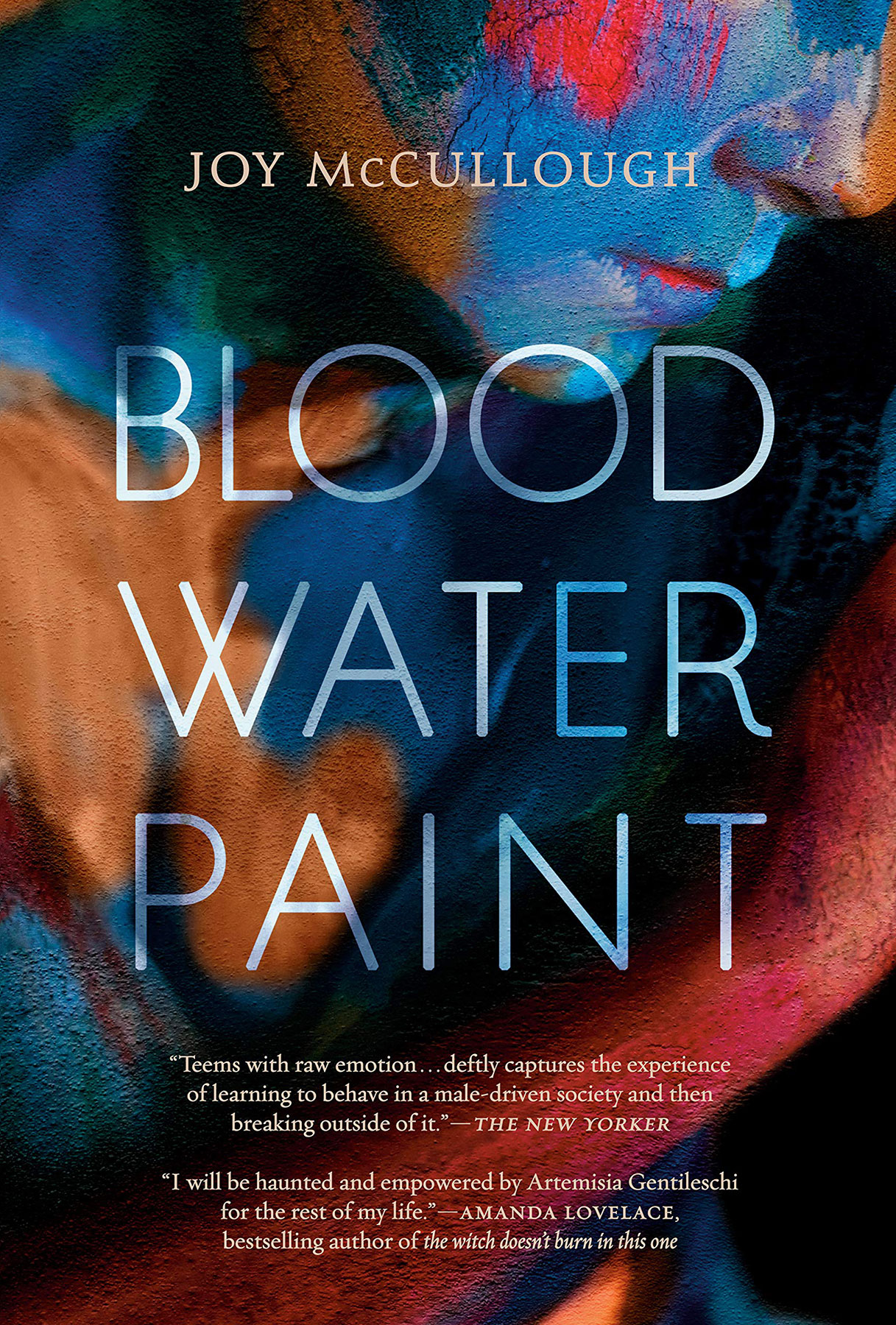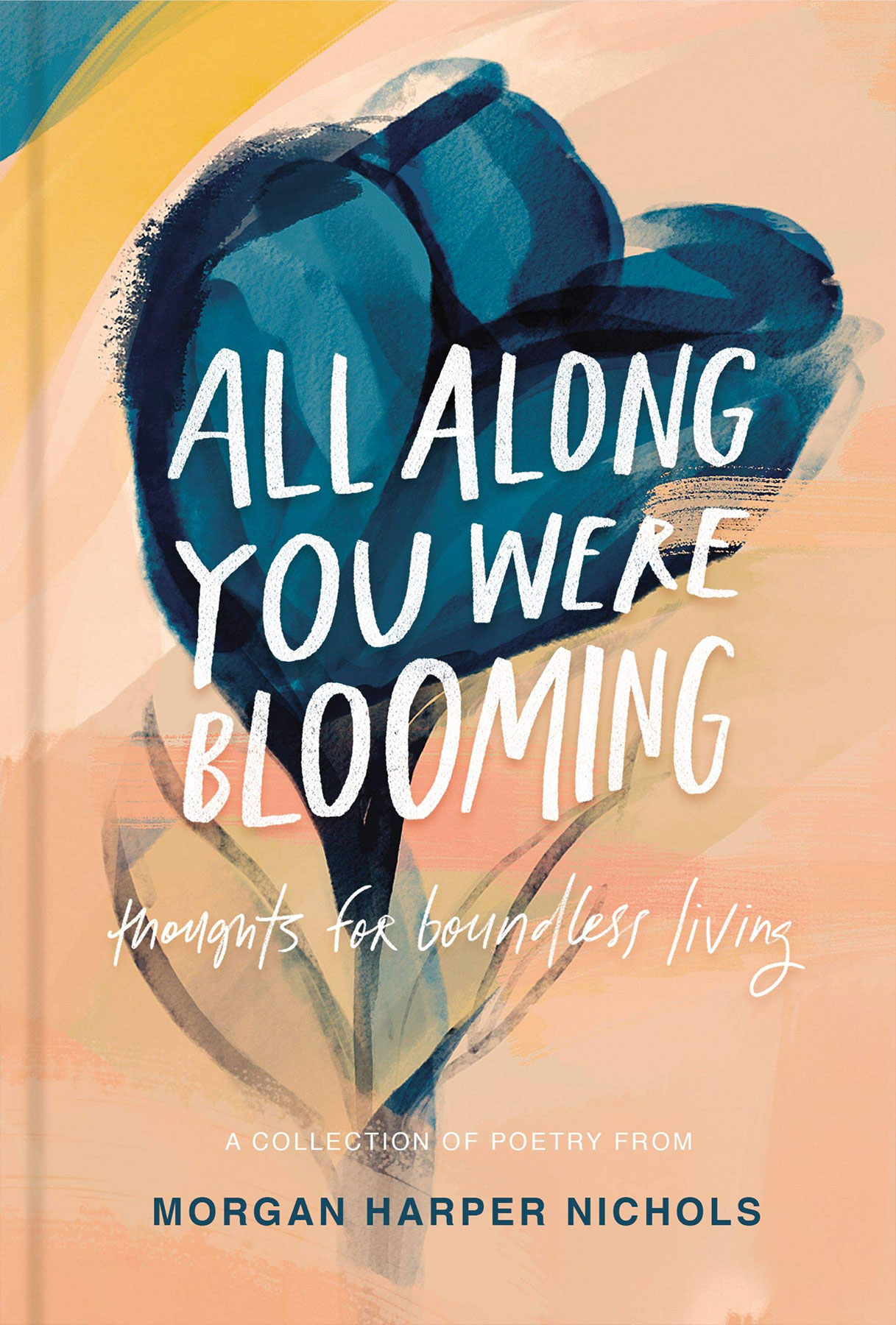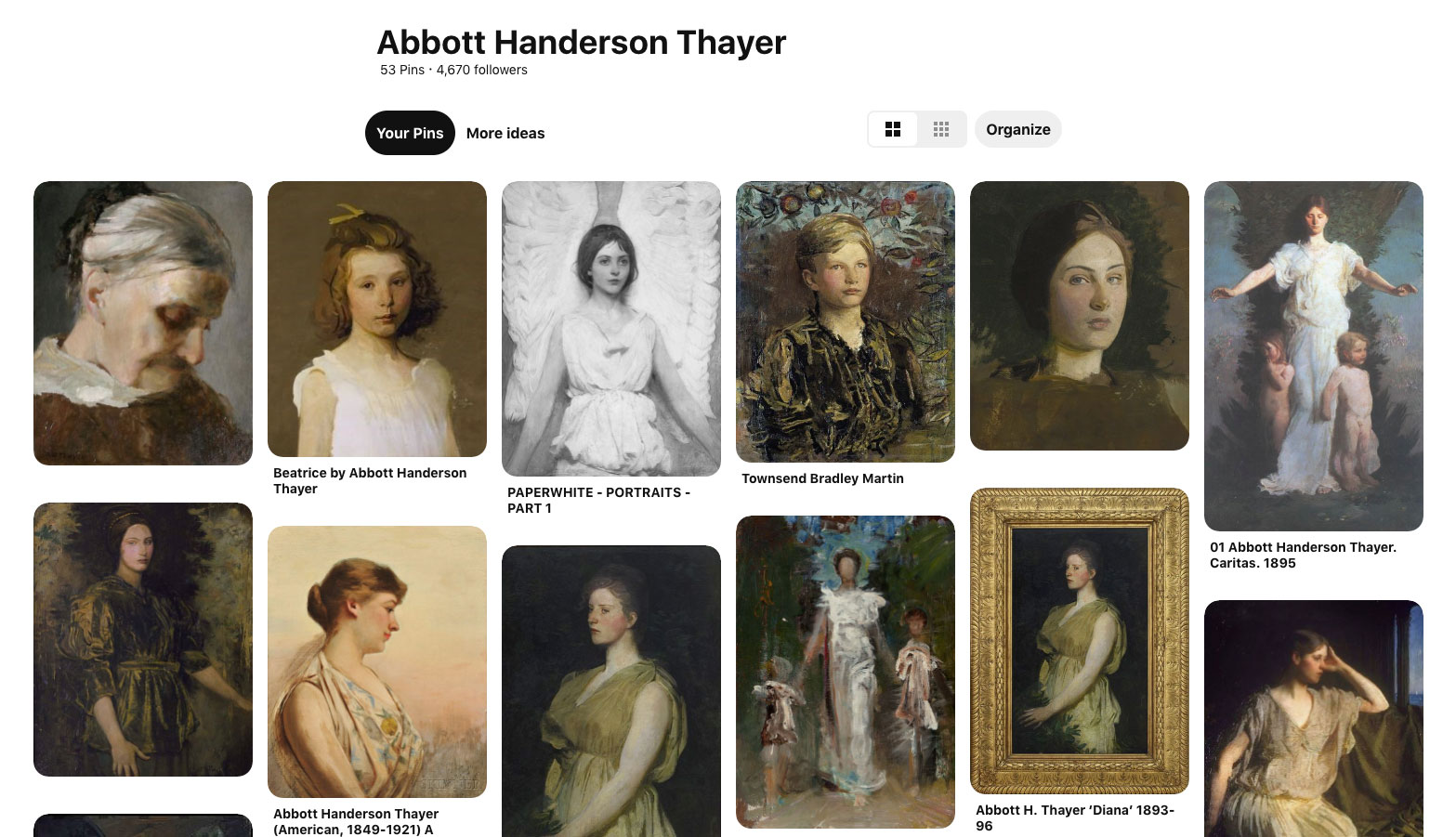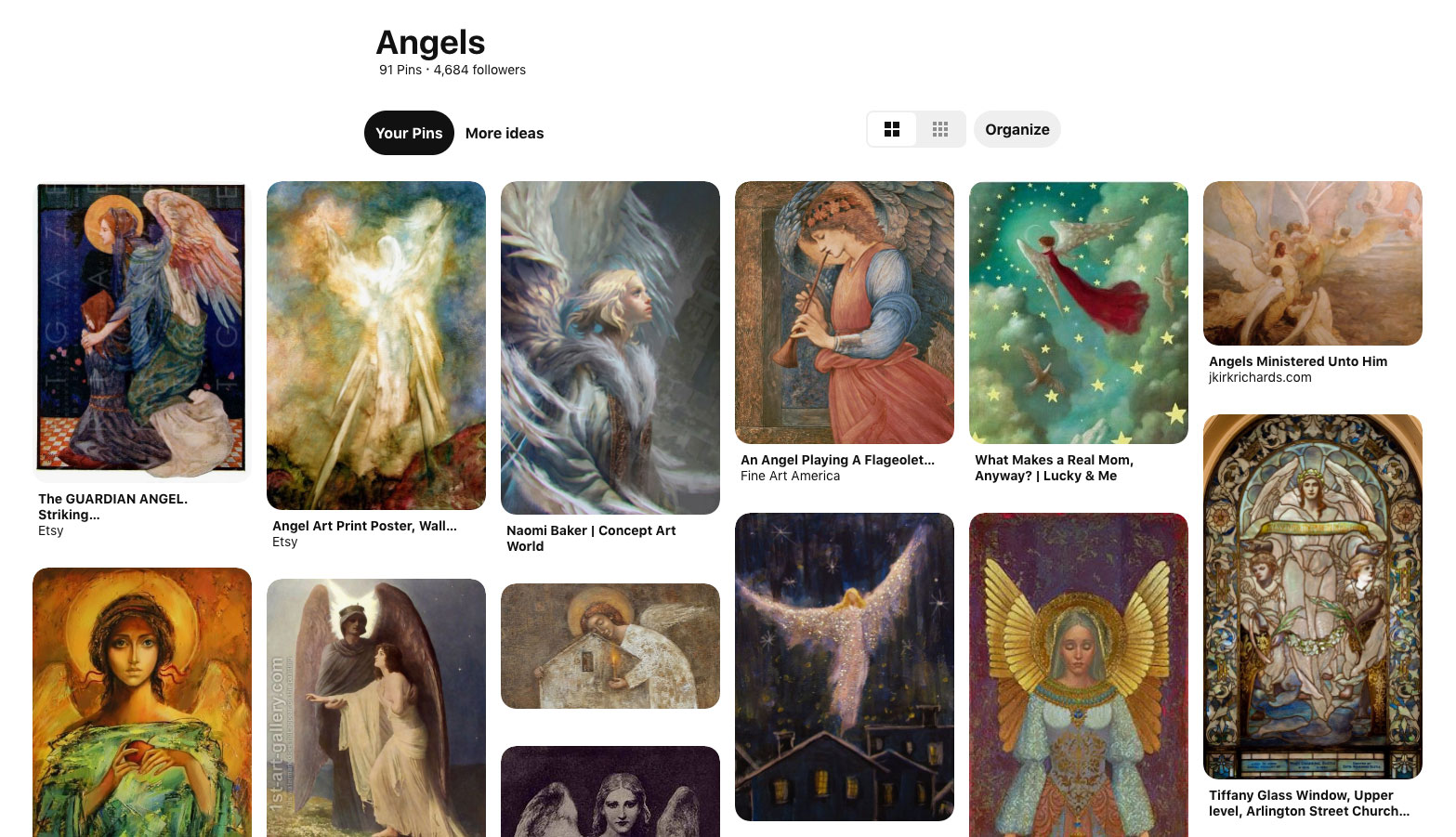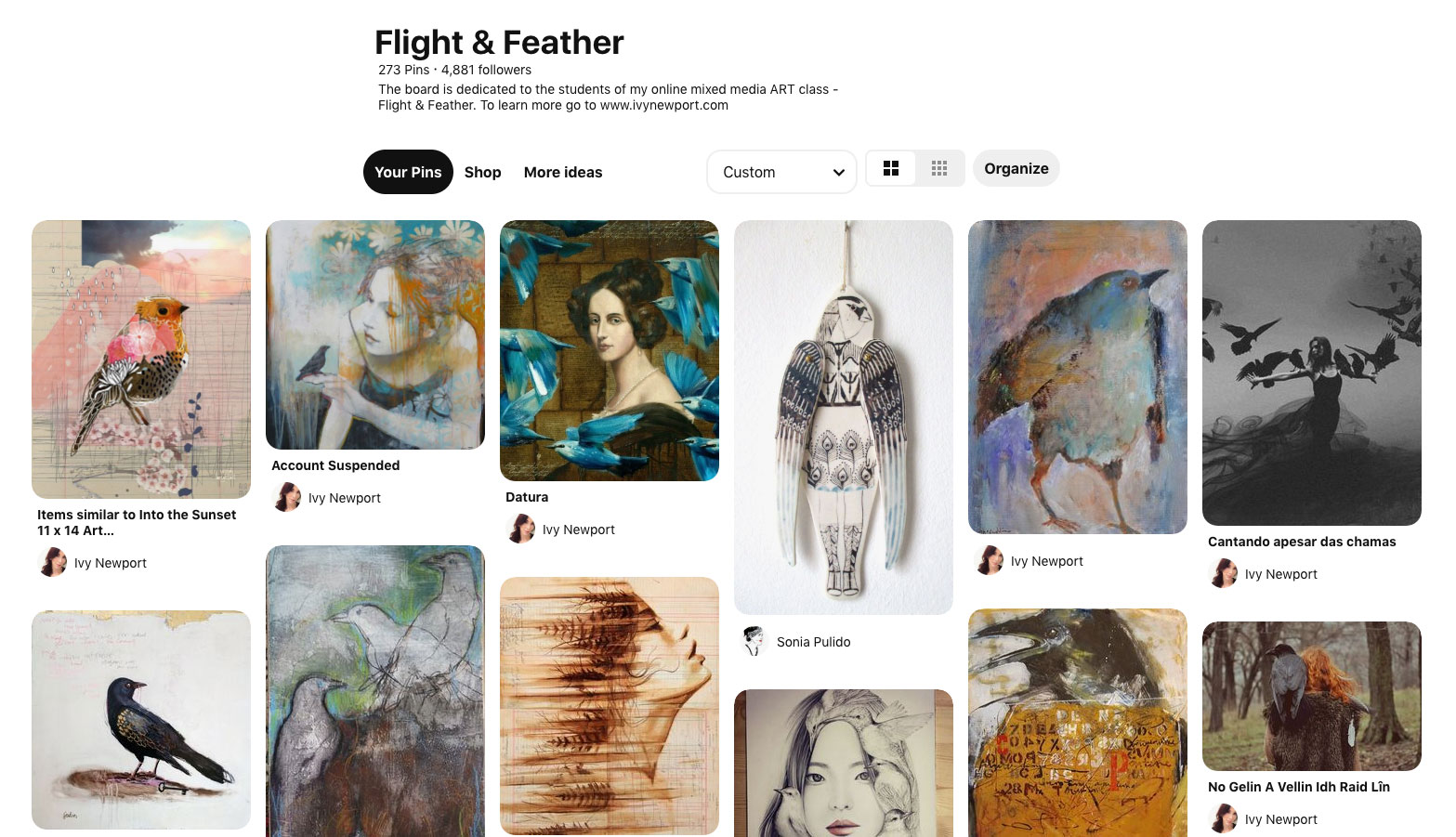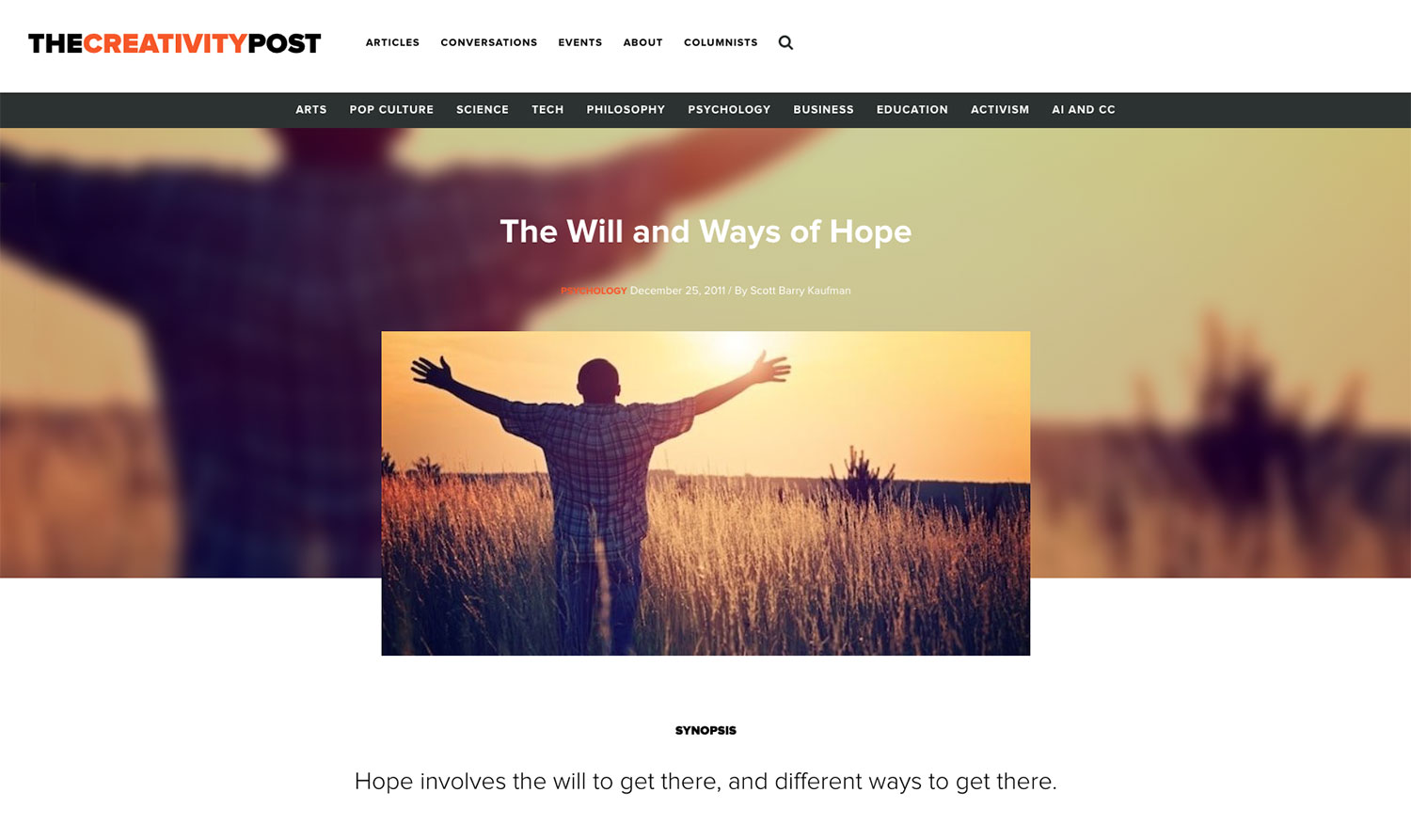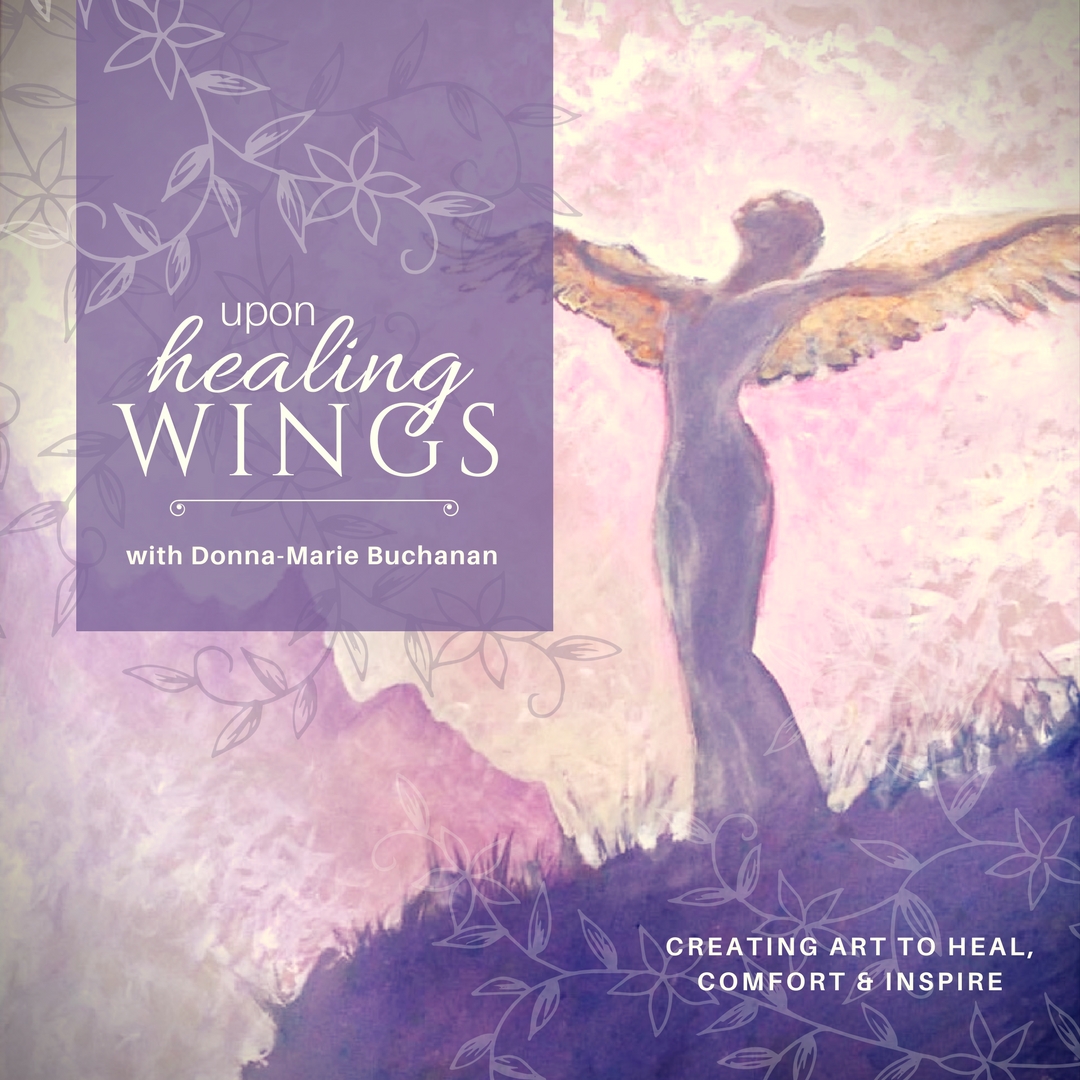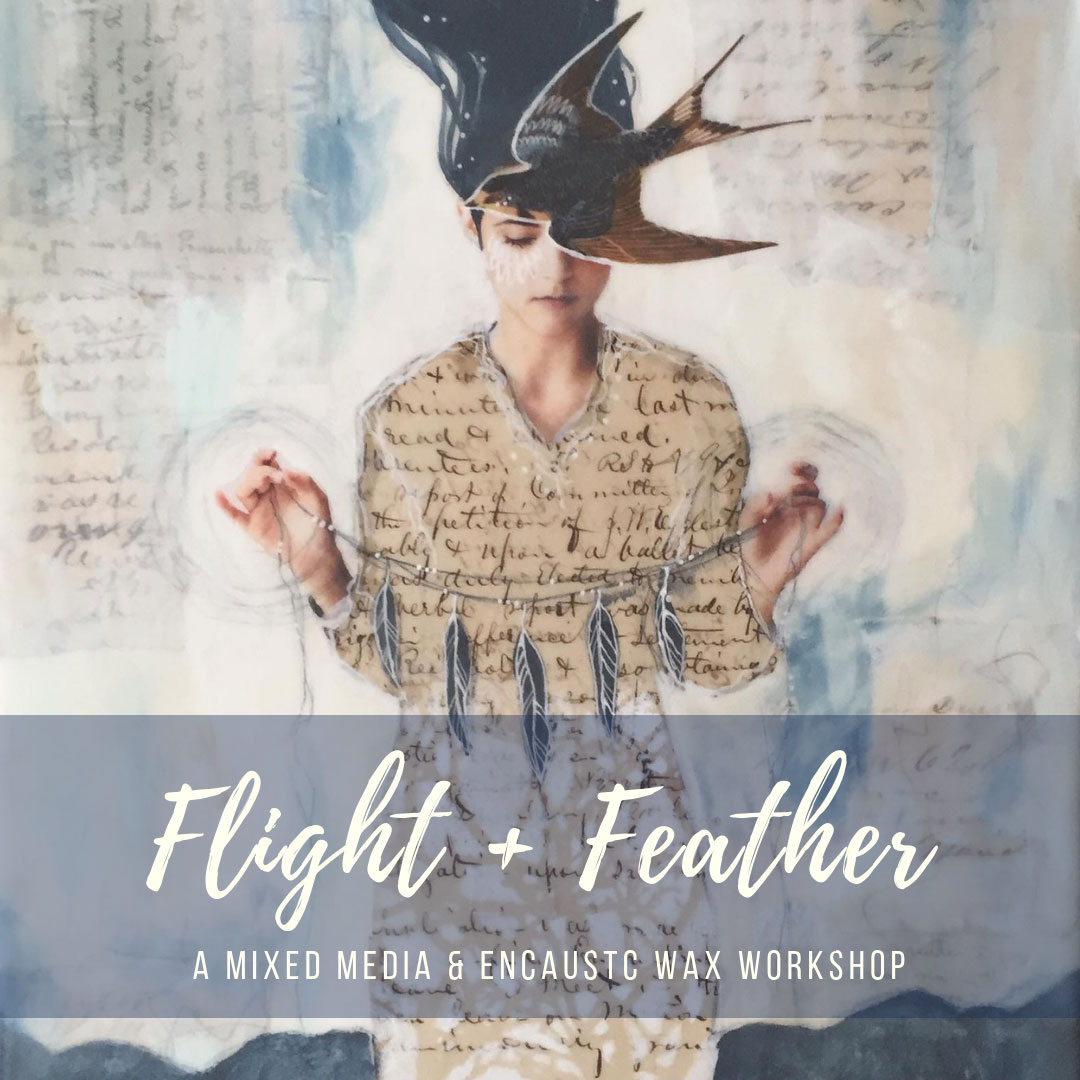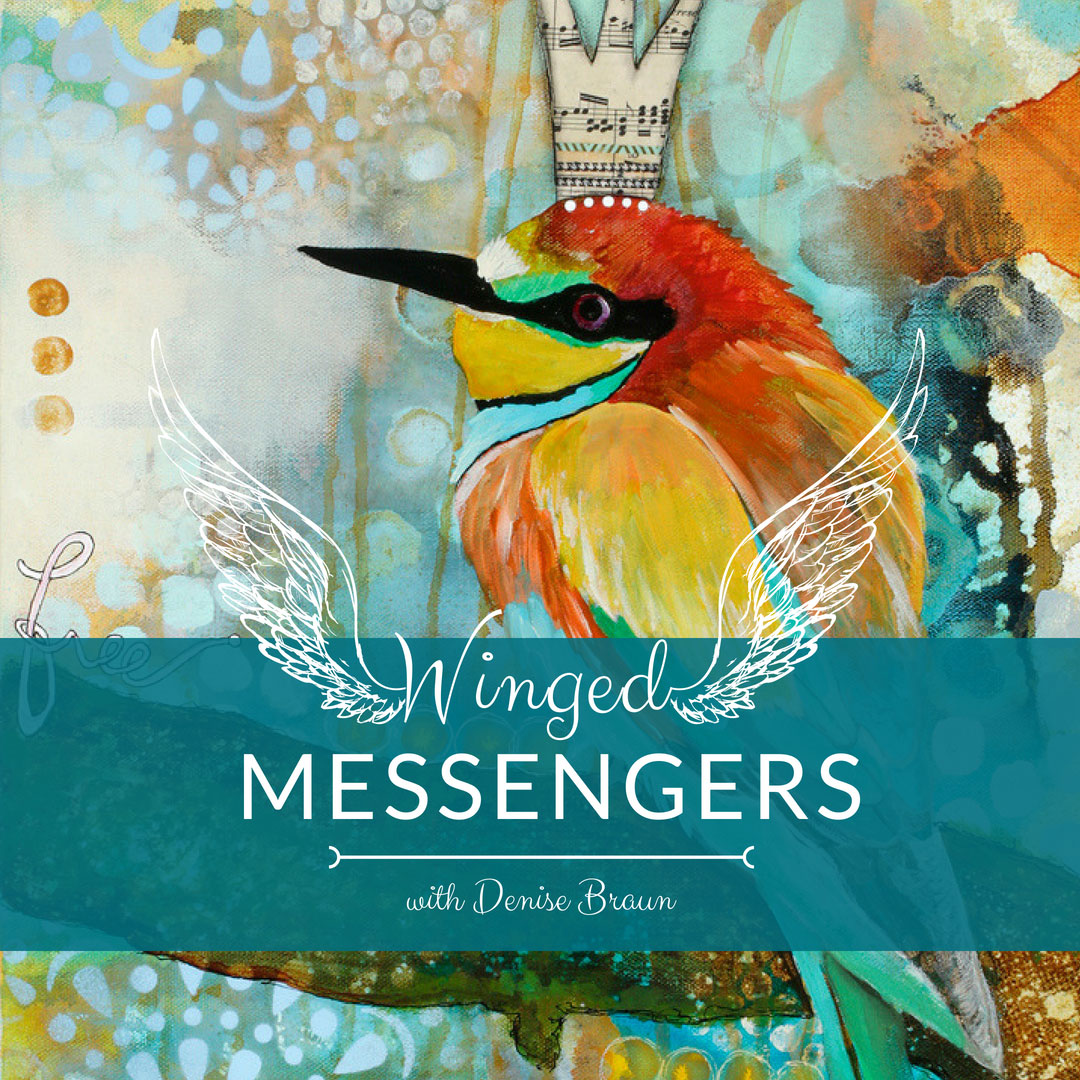IVY NEWPORT
Studioworks
Journal
a letter from ivy
Dear creative friends,
Welcome to Issue #16 of the StudioWorks Journal! As always, I’m super grateful you are here with me and I’m excited to share this with you. This month, I felt very called to focus on the theme of hope. Let’s face it, our world is such that often we can lose sight of hope. We can easily be shadowed with negativity and pessimism.
However, ART has always been and will remain to be a beacon of light and hope for humanity. It is an expression of human endurance, a legacy of creativity that even in the darkest of times remains kindled.
xo,

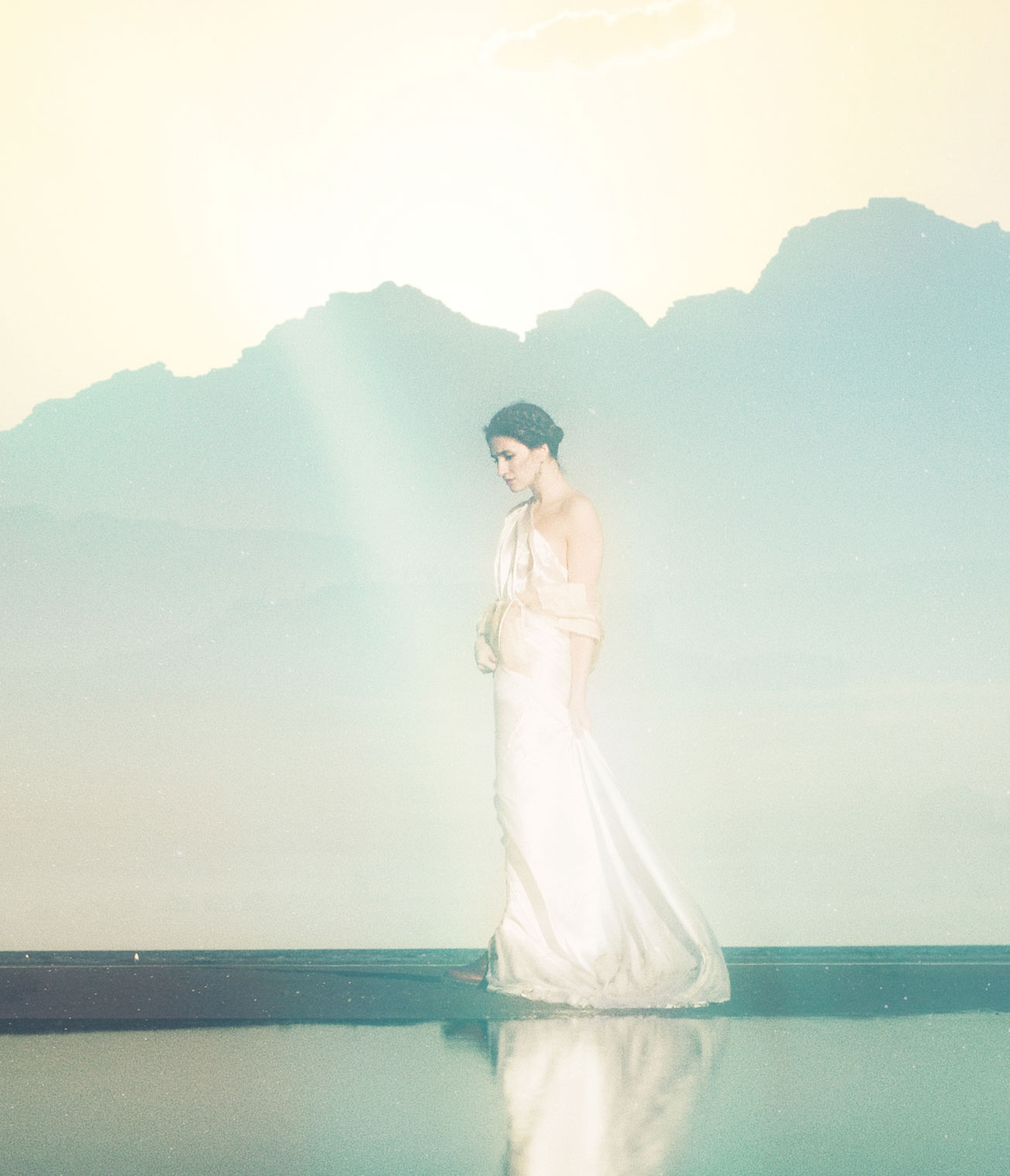
So you may be wondering, where do I start? To that, I say, wherever feels right to you. Each month we will have a theme, a creative affirmation, a power word, a color palette, sketchbook exercises, art projects, articles, recommended reading and access to wonderful inspiration and resources. I want you to think of this as a delicious new magazine, you know the ones you occasionally splurge on, with soft, velvety pages, beautiful images
Each issue will invite you to explore your creative practice in whichever way works for you. Experience each issue at your own pace. Take what resonates with you and put the rest aside for another time.
Grab a cup of something lovely and dive in.
MONTHLY THEME
Hope
“Hope is the thing with feathers
That perches in the soul
And sings the tune without the words
And never stops at all.”
– Emily Dickinson
ART & HOPE
I love these words from Emily Dickinson’s poem. They illustrate the image of hope residing in the heart space. A steadfast and resounding friend, unwavering in its song, a constant light in our soul. Isn’t that what hope is? And isn’t that what art has always represented in this same unrelenting manner? An unstoppable force.
Art is a representation of us. A lasting impression of our existence and our legacy. The earliest human art was found during a time when there was no room for luxury or idleness. A time when survival was everything, YET artists made art.
Artists carved stones with symbols or painted cave walls with crushed ochre. They created for the sake of creating. To leave their mark. To depict their world. To illustrate their beliefs and dreams. To create meaning. To share hope.
Whether a painting, a song, a poem or a story – artistic expression gives meaning to life. It reminds us of beauty or pain or the sacredness of living. It reminds us we are not alone and that we matter. This is why I believe hope and art are intertwined.
“I don’t think of all the misery, but of the beauty that still remains”
– Anne Frank
The Diarary of a Young Girl
Even in her dire and desperate situation, Anne Frank expressed herself with words. She clung to the beauty she could share in her diary. She clung to the hope of living beyond her experience and surviving.
When we are struggling in our lives and we begin a drawing or a painting, in many ways it is a balm to our soul, a momentary escape and a release of energy. Our mind becomes quiet, and our hearts open and soften, yielding to the song of hope.
When we share our creations, it invites others to enter that same space of hope. To gaze upon something beautiful and wonder for what could be, what may come or to absorb the pain of what is or what has transpired. Art can make sense of the senseless, it can express the wordless and communicate that which cannot be logically grasped. In this way, Art brings us to a deeper understanding of ourselves and our world. This feeling of connection inspires hope.
“Hope helps us to brave the struggle of life while keeping alive the possibility that we will create a better and more meaningful reality.”
– Dr John Messerly
Creativity begins with Hope
Every creative act, first begins with hope. A hope to express something. A hope to release something. A hope to create beauty. A hope to understand or change something. Hope whispers, what if? Creativity thrives on this possibility. Possibility is the sister to Hope. A close relative would be Wonder.
When you begin a drawing or a painting or a sculpture or any other creative endeavor do we not begin with hope? We answer the call of our souls to invent, imagine and envision. We surrender to a yearning that triumphs inaction. Our hands and our hearts get busy creating and Hope sings her song.
We may be fearful or doubt ourselves but we soldier on and Hope holds our hand. If, at the end, we are disappointed with our creation. “Don’t despair.” – Hope calls to us. “ Try again my love. Try again.” And we do. For Hope is not optimism, it does not expect a specific result. Hope goes beyond that. Hope is a willingness. A desire to continue. It is non-specific and is more about we than I. We continue to make Art because we know Art is important and vital to the world, not just to us.
Hope in Nature
As artists, we can indeed be crushed by our failed attempts, our extreme self doubt and the sting of external criticism. We are sensitive, let’s face it. And yet, our sensitivity is part of our power. We feel deeply and we express this in our work but no one said it was an easy road.
When you approach those ragged edges of creative despair, I encourage you to look to nature. Go outside and walk or sit in your garden. Watch how unrelenting nature is. How it perseveres.
We’ve all been witness to the turning of winter to spring. How barren trees suddenly become laden with budding flowers. How the earth softens and earthworms navigate blindly towards the light. How a hummingbird beats its tiny wings tirelessly, resting only a few minutes before zipping on in search of another bloom. We see how the trees crack the pavement, their roots seeking water.
Nature has so much to teach us about hope and perseverance. If a tree gave up hope of finding water, what does it do? It dies. If the bee gives up its quest for nectar, nothing blooms. In the most charred forest, one can still find life.
“Hold fast to dreams, for if dreams die, life is a broken-winged bird, that cannot fly.”
– Langston Hughes
We do indeed need to hold fast to our dreams, to our hope. As Artists, I will even go as far to say, that it is our responsibility to do so. Not only for ourselves but for humanity. For the collective. Artists have always carried the torch of human hope. This won’t ever change. So while you walk this Earth, cherish the song in your heart and hold your light high. The shadows you cast out will not only be your own.
Hope
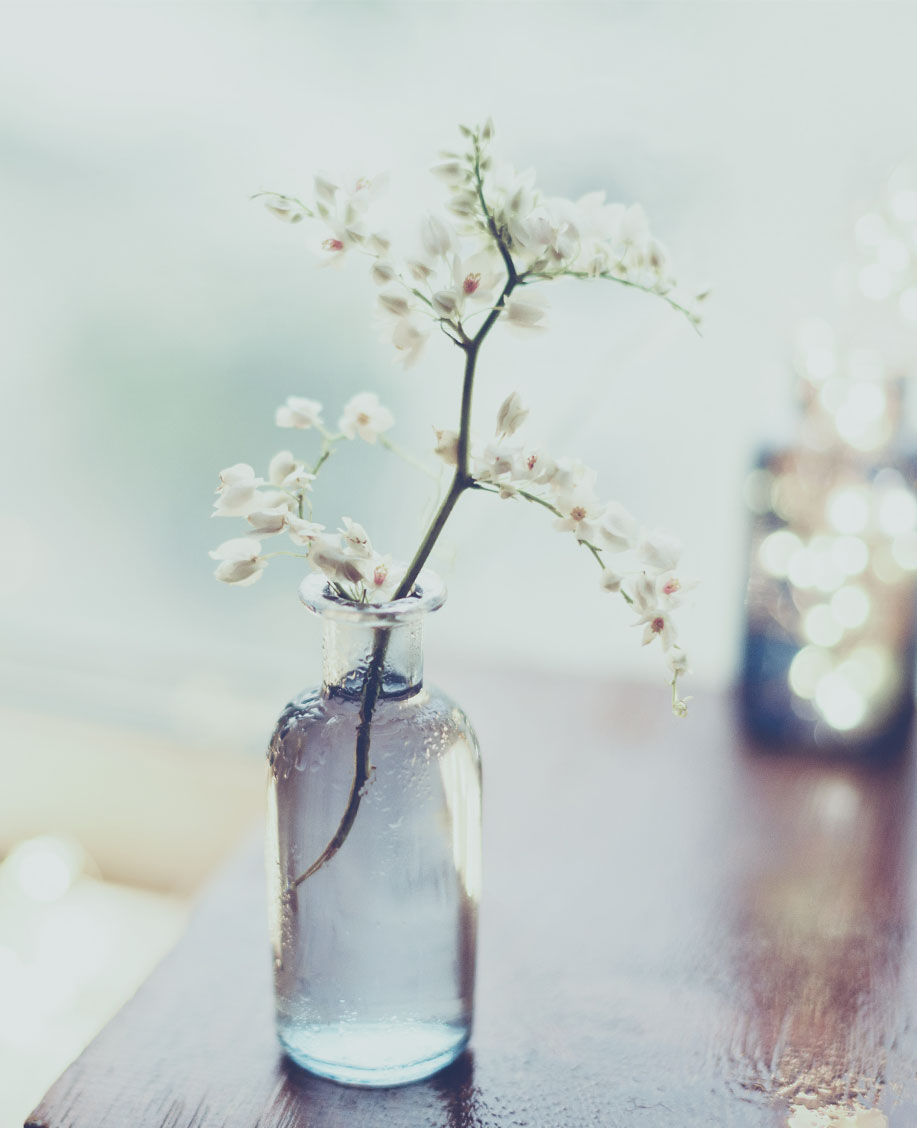
HOPE PROMPT:
- A HOPE JAR – write down all the things you hope for on small pieces of paper. They can be about your artistic path or could be more universal. Put these in a pretty jar. When you feel despair, pull one piece of paper and reflect on this wish. Meditate or art journal (or both) about this hope. Let hope wash over your heart.
“Hope is the only thing stronger than fear.”
― Unknown
WORD OF THE MONTH
Hope
A feeling of desire for something and confidence in the possibility of its fulfilment. (noun)
To believe, desire, or trust (verb)
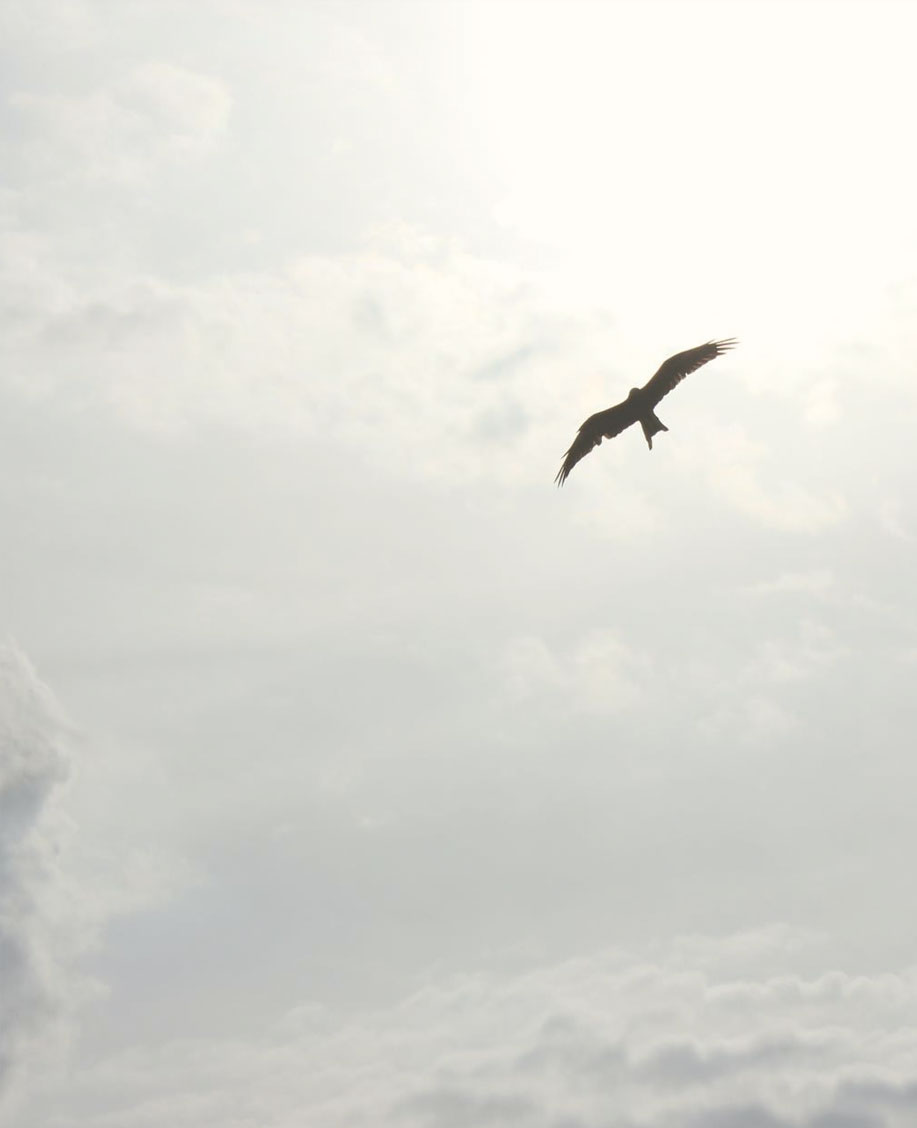
It has been said that Art is the “highest form of hope” and this rings true in so many ways. Creative expression is the manifestation of hope. A song can lift your spirits. A story can inspire change. A dance can move your soul. A painting can give vision to the wordless. In these ways, Hope works through Art. They join hands and propel us forward. From hope comes, wonder, invention, inspiration, action, change and yes, creativity!
“As artists our job is to keep the faith and help humankind to remember beauty and thus the promise of happiness. Our work defends hope, the most precious homeland for any soul.”
– Todd Plough
Word of the Month : Hope
Angel Meditation
We are lucky this month to have a beautiful meditation from one of our creative contributors – Homa Nekoorad. This wonderfully soothing meditation invites us to interact with our angels and call upon them for help and guidance in our creative process. Enjoy.
“Angels speak to those who silence their minds long enough to hear.”
― Proverb
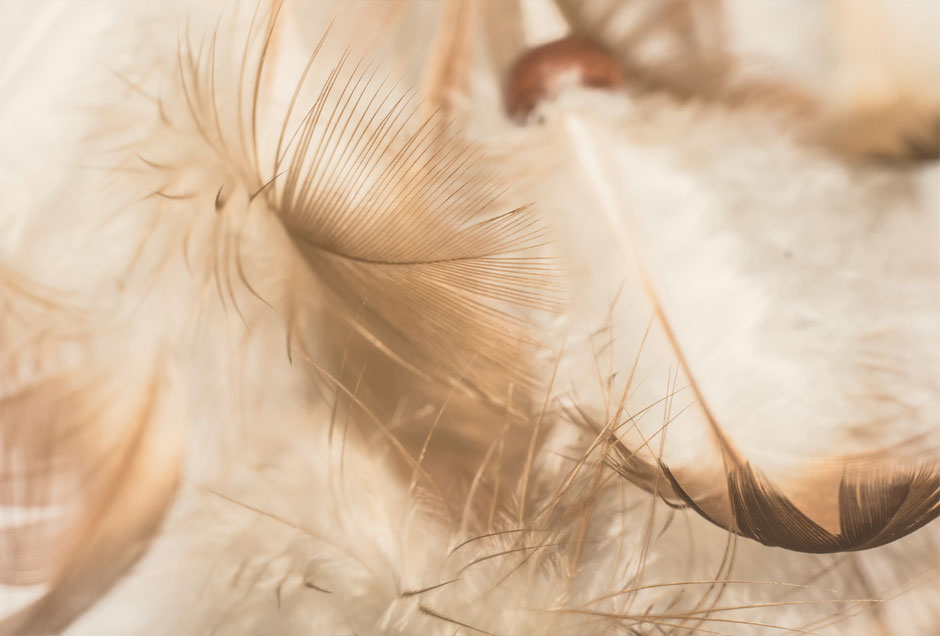
Angel Meditation
7 Ways to Foster Hope in Your Creative Life
1. STAY INSPIRED
We all know how icky it feels to be uninspired. Life just kinda gets a bit blah. So, keep your creative mind open and when you are feeling inspired make note of this and keep a creative journal or inspiration book. Write down what is inspiring you. Make lists of things you want to learn about, places you want to visit and ideas you want to create. When you hit those moments when your creative juices run dry, pull out these lists to restart the engines!
2. CELEBRATE YOUR GROWTH
Don’t constantly beat yourself up about what you can’t yet do in your creative journey. Celebrate how far you have come and bear witness to your progress. If you are just beginning your path as an artist celebrate your commitment to practice and feel excited and optimistic of all that you are open to learning.
3. CHERISH YOUR INDIVIDUALITY
Remember, art is not about being like someone else, it’s about embracing the beauty of your own uniqueness and expressing that in a way ONLY you can! Love on your quirks, your eccentricities, your particular interests and passions. Art is about nonconformity! So quit trying to fit in and embrace YOU!
4. STOP COMPARING
Nothing can deaden hope faster than comparing yourself to other artists. This is not a race nor is it a competition. Your ego likes to look at it this way but this is absolutely not productive. If you find yourself doing this with certain people whether in real life or on social media, you may need to readjust your perspective and tighten up your boundaries. You must protect your inner artist. If you need to kindly unfollow someone who triggers this in you, then do it. Take responsibility for the feelings but give yourself some distance.
5. LEND A HAND
If you are feeling absolutely creatively blocked, then press the pause button on creating for yourself and reach out into your community. Is there an organization locally or online that you can assist? Is there a neighbor who needs some help? Do you belong to a facebook group where you can answer questions for others or offer encouragement? Can you bring someone a bouquet of flowers? Can you create a lovely card or small art piece for someone else? Giving of yourself will draw love, hope and peace into your heart. These feelings of joy and compassion fuel creativity.
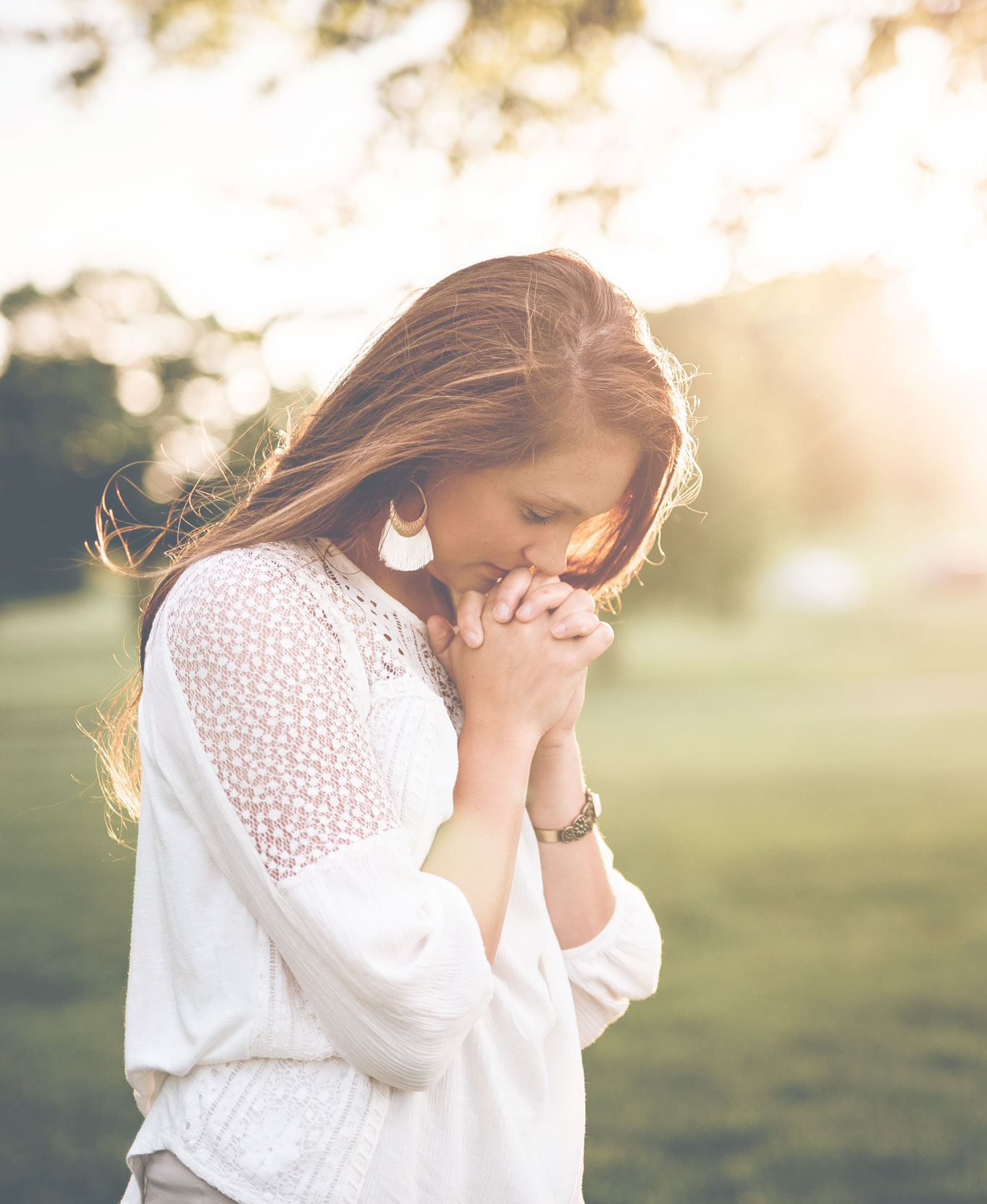
6. BE PATIENT, GENTLE AND COMPASSIONATE WITH YOURSELF
Be aware of how you are speaking to yourself. If you are beating yourself up for making a mistake or not showing up to the studio – stop. Shaming yourself DOES NOT inspire hope or inspiration. It will make your inner artist feel hurt and resentful. Instead, take a break, go for a walk and speak kindly to yourself. Begin your creative process with saying one of our creative affirmations or something that is calming and loving.
7. Make a Vision board
Creating a beautiful and inspiring vision board can foster hope and excitement for the future. You can include imagery of things your love, things you want to manifest into your world, inspiring quotes, colors, animals, places or anything that delights your eye and your heart. Put this somewhere you can enjoy everyday.
“They say a person needs just three things to be truly happy in this world: someone to love, something to do, and something to hope for.”
– Tom Bodett
7 Ways to Foster Hope in Your Creative Life
Monthly Affirmation
Each month we will have a positive affirmation. I recommend you print out this affirmation and put it in your sketchbook or somewhere in your studio. Recite the affirmation out loud each time you show up to create. Saying words aloud is powerful and can begin to re-write some of our own limiting beliefs or calm our fears. Try it now…
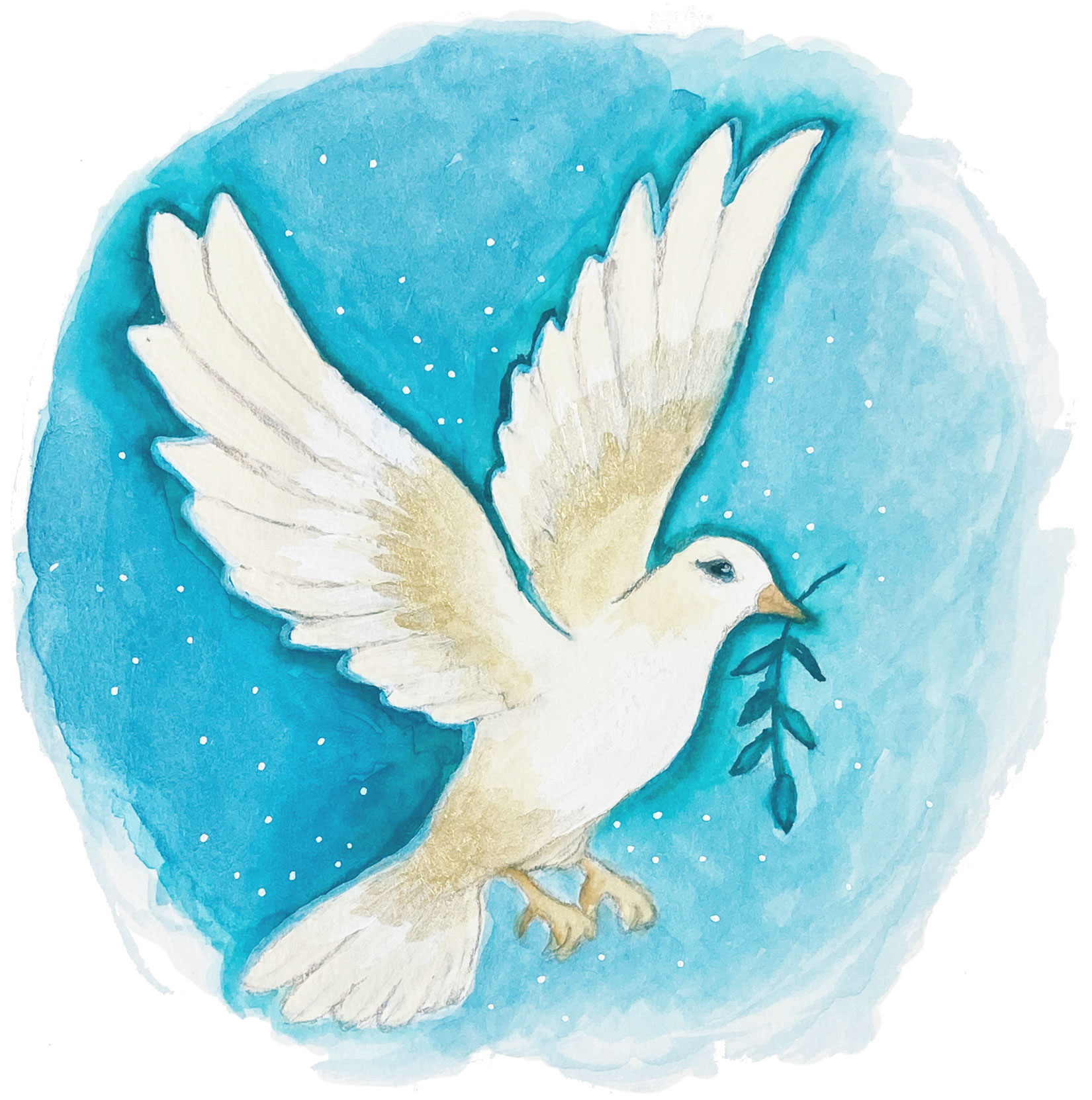
Color Palette of the Month
This month, as we focus on cultivating hope in our life, I couldn’t help but envision a palette that exudes a sense of the divine and the angelic realm of light. This month we will work with beautiful whites and cream, golden yellows, shimmering gold, soft turquoises and deep teals. I might have to throw in a midnight indigo too… A soothing and versatile range to inspire and delight our hearts.
I do encourage you to work with a palette that feels in alignment to your own self trust! Trust what colors you are drawn to and really explore them!

“Plant hope in the garden of your heart.”
– Alexandra Vasiliu
Color Palette
HOPE PROMPT:
- Create a spread in your art journal dedicated to hope. You could illustrate a poem about hope like Emily Dickinson’s or another one of your choice. Fill the page with colors and imagery that inspires hope for you.
MASTER ARTIST GUIDE
Abbott Handerson Thayer
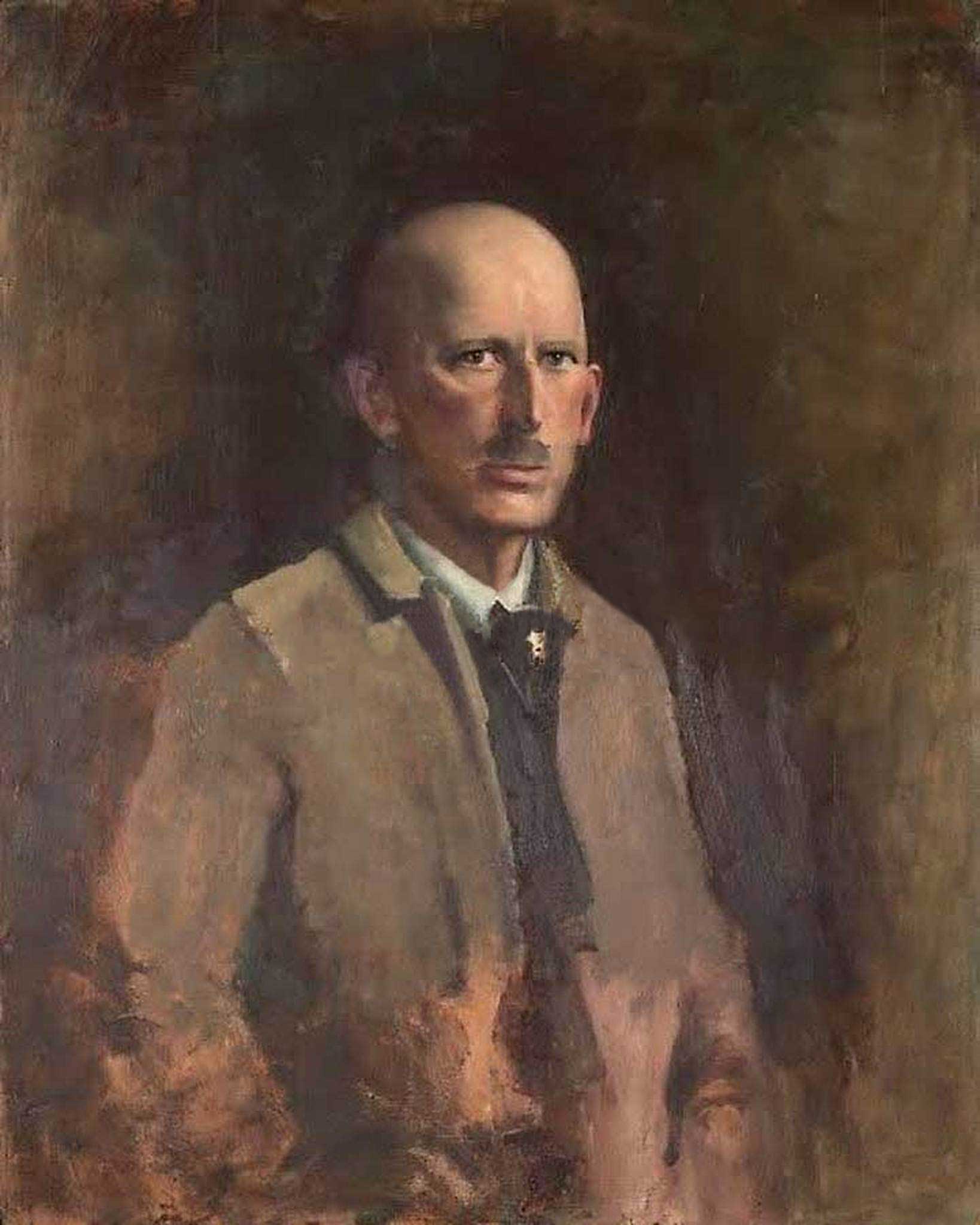
Now I must admit, before I began researching artists who were known for their angel paintings, I had never heard of Abbott Handerson Thayer. All I knew was that his angels took my breath away! They weren’t too perfect like Renaissance angels, they weren’t too stylized or idealized but rather they exuded this gentle grace, resonant strength and ethereal beauty. I was captivated.
Digging further into Thayer’s life, I came to understand that he worked with a vast array of subjects, most of which connected him to nature and women. His landscapes, portraits and still lifes are beautiful, serene and quietly moving.
I also discovered that early on in his marriage, he and his wife lost two young children suddenly. This obviously devastated them and he went on to use his remaining three children as models in his angel pieces. You wonder if these images were expressions of his hope, mingled with the pain of such a loss. Perhaps this is why his angels exude such comfort and peace. They may have been like medicine for Thayers broken heart.
Just as the angels may have brought him comfort, so did Mother Nature – we can see from his work that he was a naturalist and greatly enjoyed nature. As previously mentioned, we can certainly cultivate hope by communing with the natural world. To further his connection with nature he often slept outdoors and refused to enroll his children in school. He felt he could teach them enough through naturalistic education.
Thayer spent most of his life surrounded by women, whether they be in his household or models and he had a high regard for the divine virtue and aesthetic gifts of women. His portraits communicate this regard with quiet beauty and classic grace. In the 1880’s he began to add wings and halos to his female figures furthering this. His love of birds and all things winged only heightened these angelic works.
His work resonates with me in its humble allure and reserved grace. I love how many of his works have an unfinished or raw quality to them. To me, he embraced the incredible beauty of our world but also welcomed its imperfections and mystery. To me, hope is instilled in his brushstrokes and shown in his personal resilience to carry on despite the struggle.
“The world becomes fresh and hopeful and new, when we create.“
– Lynda Lehmann
Let’s learn a little more about this artist
Thayer was born in Boston to William Henry Thayer and Ellen Handerson. The son of a country doctor, he spent his childhood in rural New Hampshire, near Keene, at the foot of Mount Monadnock. In that rural setting, he became an amateur naturalist (in his own words, he was “bird crazy”). Thayer closely studied Audubon’s Birds of America, experimented with taxidermy, and made his first artworks: watercolor paintings of animals.
At the age of fifteen, he was sent to the Chauncy Hall School in Boston, where he met Henry D. Morse, an amateur artist who painted animals. With guidance from Morse, Abbott developed and improved his painting skills, focusing on depictions of birds and other wildlife, and soon began painting animal portraits on commission. He also taught his sister, Ellen Thayer Fisher, techniques that he was learning.
At age 18, he relocated to Brooklyn, New York, to study painting at the Brooklyn Art School and the National Academy of Design. studying under Lemuel Wilmarth. He met many emerging and progressive artists during this period in New York, including his future wife, Kate Bloede and his close friend, Daniel Chester French. He showed work at the newly formed Society of American Artists, and continued refining his skills as an animal and landscape painter. In 1875, after having married Kate Bloede, he moved to Paris, where he studied for four years at the École des Beaux-Arts, with Henri Lehmann and Jean-Léon Gérôme,[5] and where his closest friend became the American artist George de Forest Brush. Returning to New York, he established his own portrait studio (which he shared with Daniel Chester French), became active in the Society of American Painters, and began to take in apprentices.
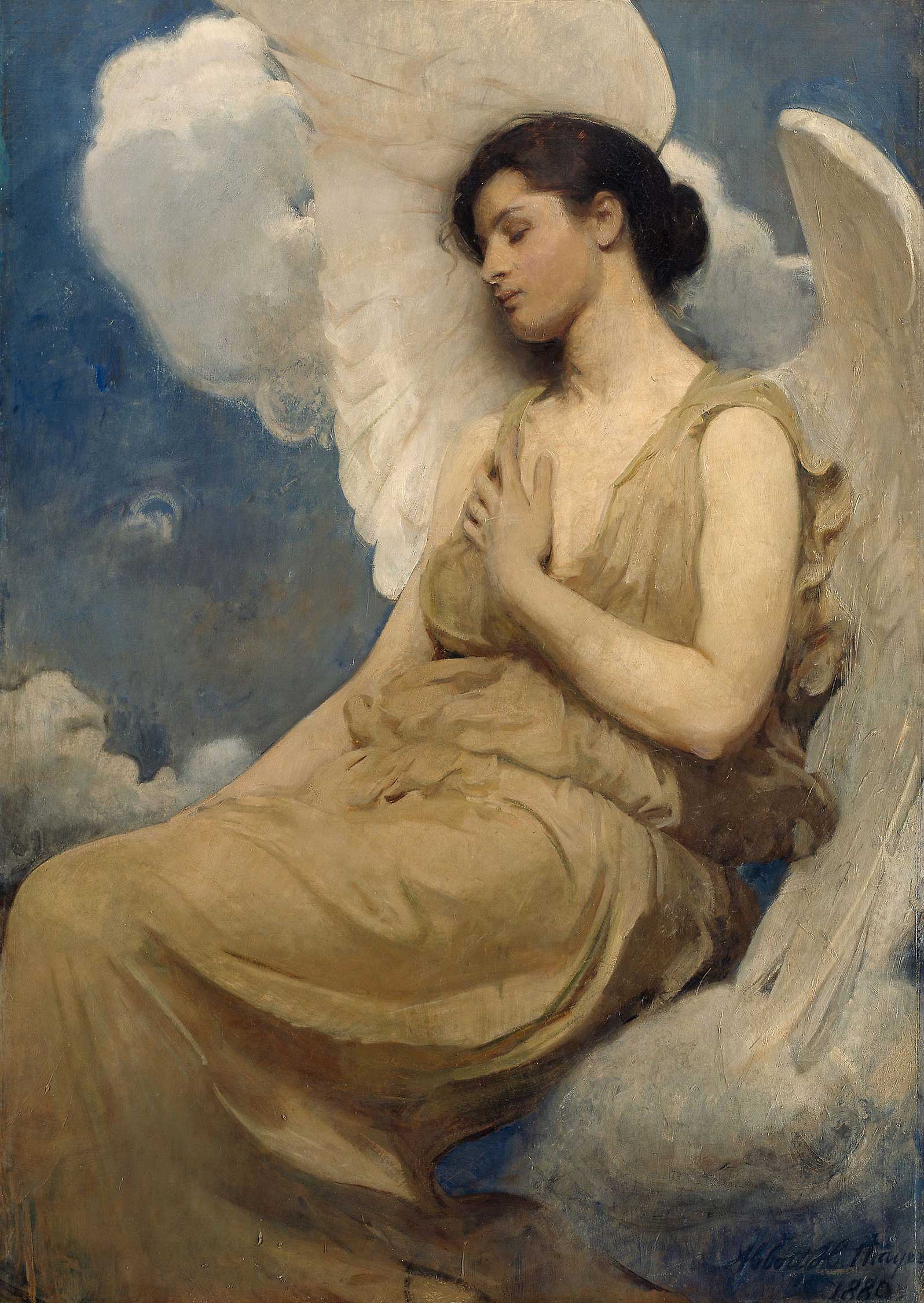
Life became all but unbearable for Thayer and his wife during the early 1880s, when two of their small children died unexpectedly, one year apart] Emotionally devastated, they spent the next several years relocating from place to place. Although he was not yet secure financially, Thayer’s growing reputation resulted in more portrait commissions than he could accept. Among his sitters were George Washington Cable, Mark Twain, and Henry James. He also made numerous portraits of the three remaining Thayer children, Mary, Gerald, and Gladys, and used them as models for symbolic compositions such as Angel (1887) and Virgin Enthroned (1891).
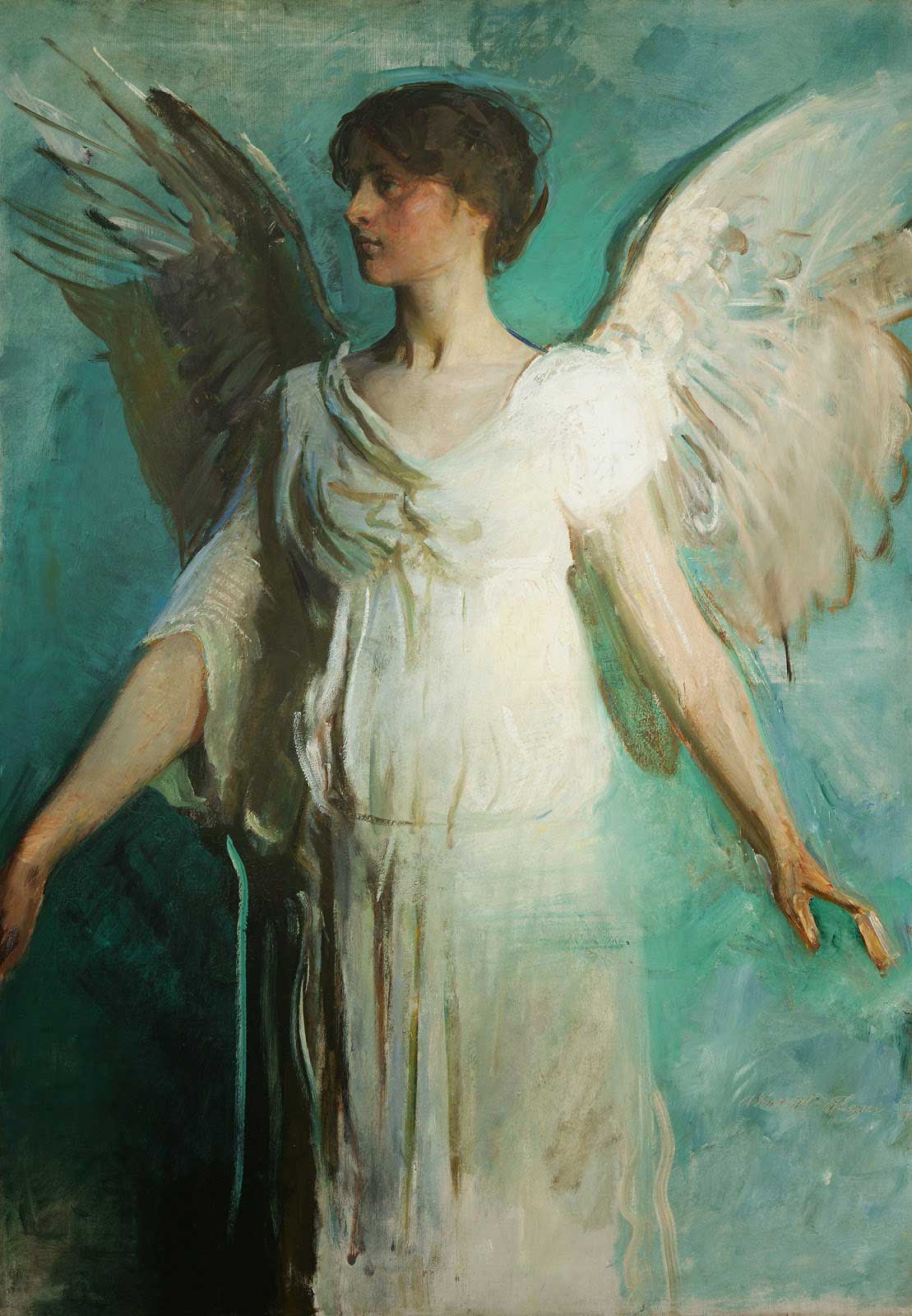
“Art is the highest form of hope“
– Gerhard Richter
It is difficult to categorize Thayer simply as an artist. He was often described in first-person accounts as eccentric and mercurial, and there is a parallel contradictory mixture of academic tradition, spontaneity and improvisation in his artistic methods. For example, he is largely known as a painter of “ideal figures”, in which he portrayed women as embodiments of virtue, adorned in flowing white tunics and equipped with feathered angel’s wings. At the same time, he did this using methods that were surprisingly unorthodox, such as purposely mixing dirt into the paint or using a broom instead of a brush to lessen the sense of rigidity in a newly finished, still-wet painting.
Despite rapid changes in the art world in the early 20th century, Thayer’s reputation remained strong. Yale University offered him an honorary degree in 1916, and the Carnegie Institute in Pittsburgh mounted an exhibition of his work in 1919 that included over fifty paintings. The view from his home of Mt. Monadnock became a favorite subject, and when the area was threatened with development Thayer campaigned successfully for its preservation.
By his own admission, Thayer often suffered from a condition that is now known as bipolar disorder. In his letters, he described it as “the Abbott pendulum”, by which his emotions alternated between the two extremes of (in his words) “all-wellity” and “sick disgust”. As he aged, he suffered increasingly from panic attacks (which he termed “fright-fits”)nervous exhaustion, and suicidal thoughts. Thayer continued to paint, but was compelled to stop working for weeks at a time due to nervous exhaustion. At age 71, Thayer, disabled by a series of strokes, died quietly at home on May 29, 1921.
Enjoy this slide show of his work
Some of his finest works are in the collections of the Freer Gallery of Art, Metropolitan Museum of Art, National Academy of Design, Smithsonian American Art Museum, and Art Institute of Chicago.
Here’s a Pinterest board full of his work to inspire you!
Master Artist Guide
Sketchbook Explorations
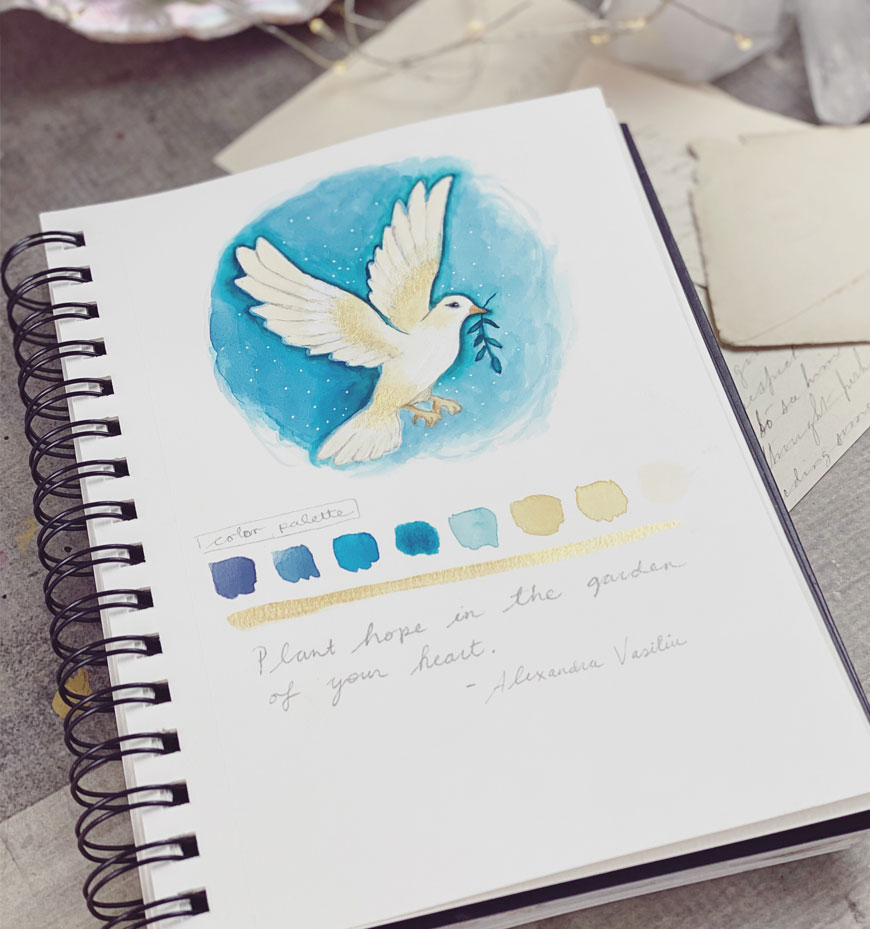
Before we begin our explorations, I wanted to provide a cohesive theme for us to focus on. This will help unify our explorations and provides us with a simple place to start when approaching a VERY blank sketchbook.
Our sketchbook theme this month is Angels, birds and symbols of hope. Since we are focusing on hope, it only makes sense that we work with the realm of angels. Angels, for so many represent hope, guidance, faith and reassurance. Angelic figures are pervasive across the globe and seen in many cultures and belief systems. The common thread is that these light beings are connected to divinity and act as protectors and messengers of hope. They are wonderful to create with so I hope you will enjoy this aspect of our explorations this month.
Of course, our sweet bird friends are often linked to angels and messengers so they will also play a role in our theme for the month. The swallow has been a classical symbol of hope, in Aesop’s fables and numerous other historic literature. It symbolizes hope, in part because it is among the first birds to appear at the end of winter and the start of spring. Other symbols of hope include the anchor and the dove.
Please remember, our explorations in our sketchbook are really just access points to get you into the flow. However, they can also be seeds for new ideas, concepts and themes in your art. Some of them will be more about writing and others more about drawing and painting. You will see below three prompts and exercises explained and photographed from my own sketchbook. You are welcome to expand upon, invent and experiment with your own concepts too. Use our color palette if you want to. You will see I stay in that theme for my explorations. These may feel silly at first but let your inner artist play.
EXPLORATION 1
Hope Stones
As we have discussed, art brings hope. So…let’s get out of our sketchbooks for a minute and spread some hope. Find a smooth stone (or several) in your garden or out and about and paint a symbol of hope on it – this can be a feather, a heart, an anchor, a bird, an angel or any other symbol that resonates with you. Now take your stones and place them out in your community for people to find. You could place them along hiking trails, in parks or public gardens or even on a bench. Maybe write a few words on the back. Leaving these little tokens of hope may just make the difference in someone’s day. If you have children in your life, get them involved too!
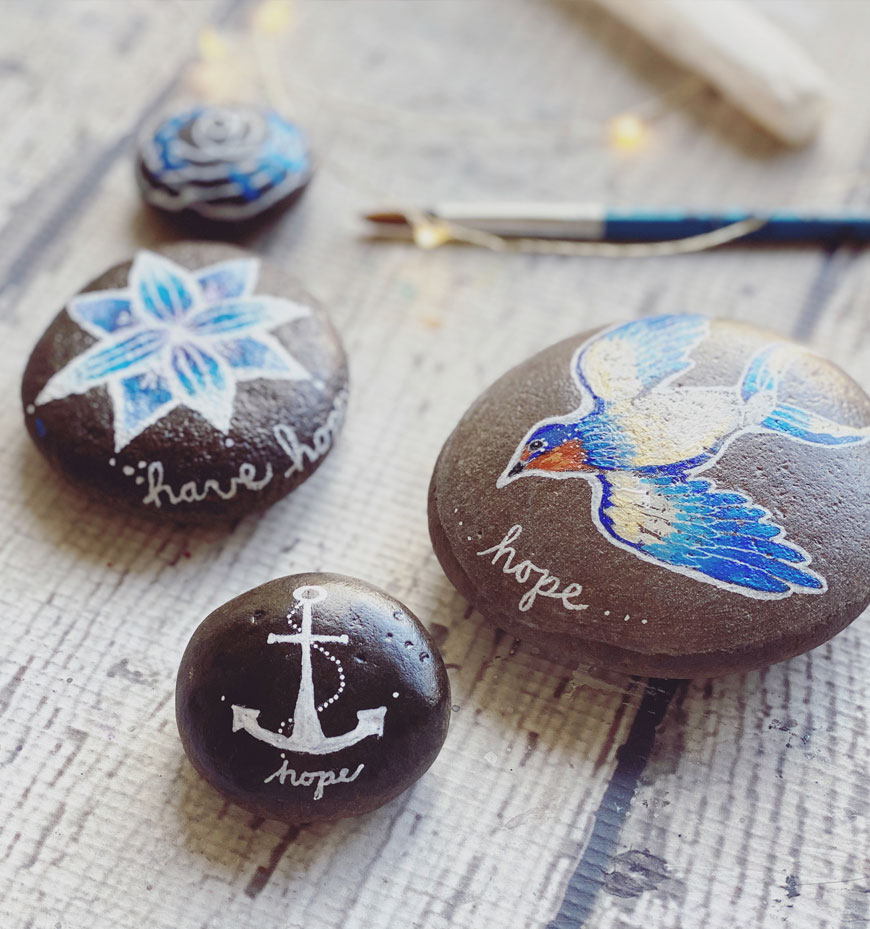
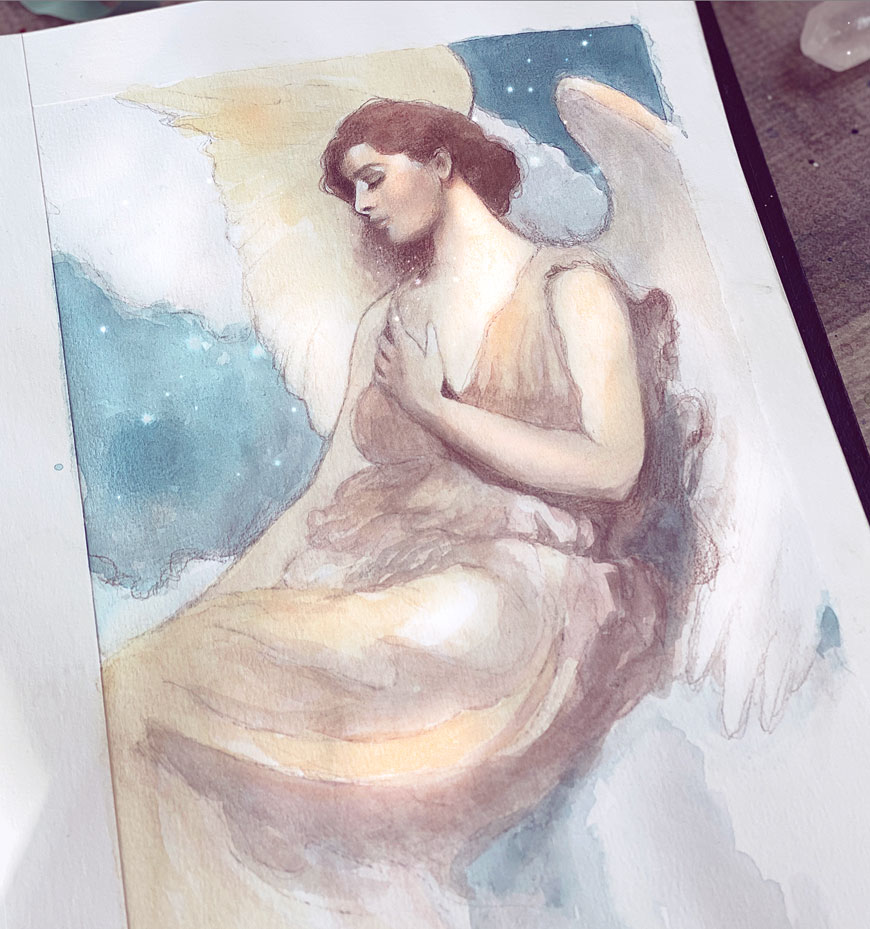
EXPLORATION 2
Master Study
Choose one of Abbott Handerson Thayer Angel pieces and do a master study of it or create a piece inspired by it. Remember, it’s not about trying to paint exactly like Thayer but rather to truly observe his work and do your best to enjoy and express yourself with him as your inspiration.
EXPLORATION 3
Birds of a Feather
WITH IVY NEWPORT
Create a page dedicated to birds. These beautiful creatures are so inspiring! This can be realistic, abstract or anything in between. Use any mediums you like.
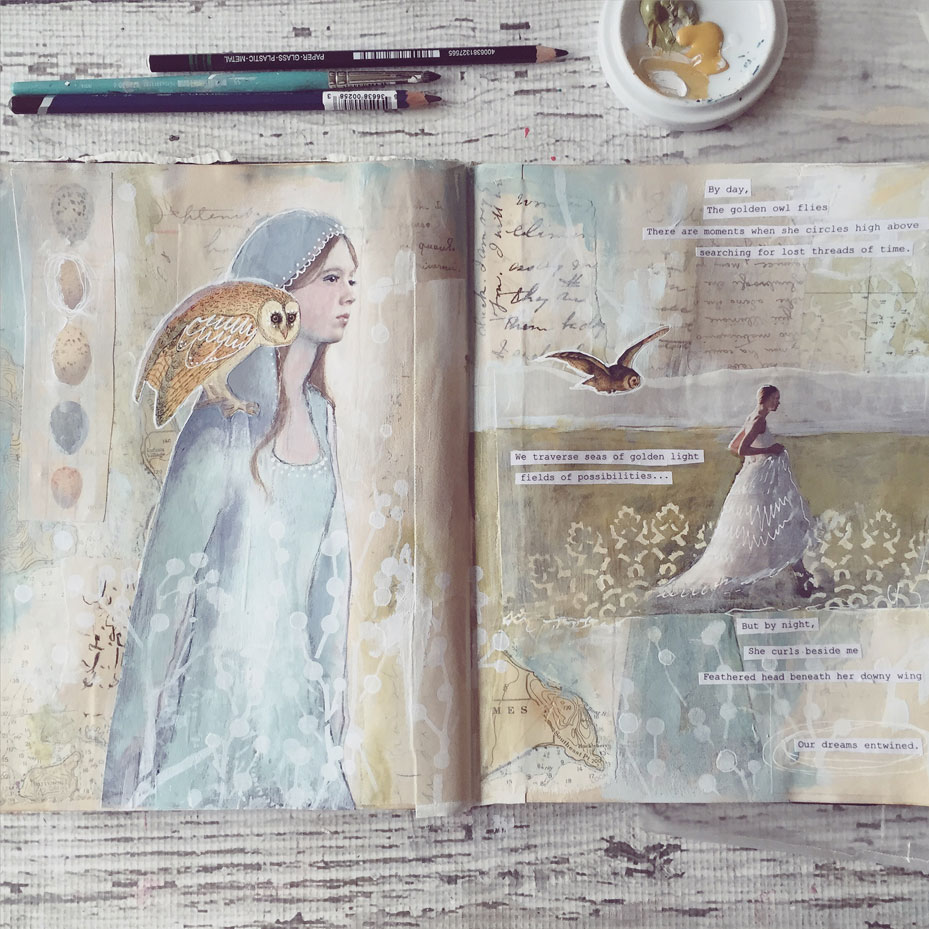
Monthly Art Lesson
Angel of Light
WITH ERIS KLEIN
In this lesson, Eris demonstrates how to create an expressive angel of light, using gestural figure drawing along with a beautiful intuitive process. However, don’t worry if you don’t know how to draw a figure, she will give you some brief tips to help you get started.
Skill and intuition used together will elevate your work to new heights and is indescribably joyful –Enjoy!
Bonus Lesson
Creative Intentions
WITH JENNIFER RUSSELL
Having courage to jump off the edge and the strength, motivation and perseverance to build your wings as you fall is no easy feat. The leap is the inciting force that point of no return, you are in the game. And even though the fall is scary you can use that to fuel your motivation to build your wings, to practice, and gain the skills you need to soar and/or land.
STUDIOWORKS
Community Corner
This month, we are excited to add a new section to the journal – The Community Corner! Here, we will feature selected submissions from our wonderful community! Please enjoy!
Learn & Grow From the Thunderstorms
BY: KIMBERLY MCGUINESS
We each have our own feelings and mental picture of thunderstorms. Whether it’s the love of sitting on the front porch listening to the thunder roll across the mountains or the cracking of the whip as the electric beauty dances through the sky, our love or dislike for the storm and the greatness of its strength are powerful. As the power and energy from the storm pass we are left with the rain gently nourishing the tiniest of life all around us as we take in a deep breath, as we think to ourselves, we made it, and we made it through the storm.
This can also be applied in our daily lives. We all have a range of storms in our lives. Some are nourishing gentle rains. Some are the ups and downs of the thunder rolling across the hills. While others are full-blown downpours and all that can accompany the energy of the storm, the electric energy, the wind, the thunder and worst yet, a tornado or hurricane. Each of us travels through storms in our lives. These storms are in our personal and business relationships and are also encountered as we make our way through the routine of each day. Some storms can be more intense than others, but, I believe, we must perhaps take a look at the outcome and choose to learn and grow from the storms in our lives, because of course, nothing happens without reason.
When we can choose to grow from our storms we can help people believe again, be positive, and be nourishing to themselves and others. Yes, it’s a mindset, but, yet again, we have to choose the mindset which best moves us forward in a positive direction, when we do, we learn, we grow, from what we may have just gone through. Should we not choose this, then what will we choose and when?
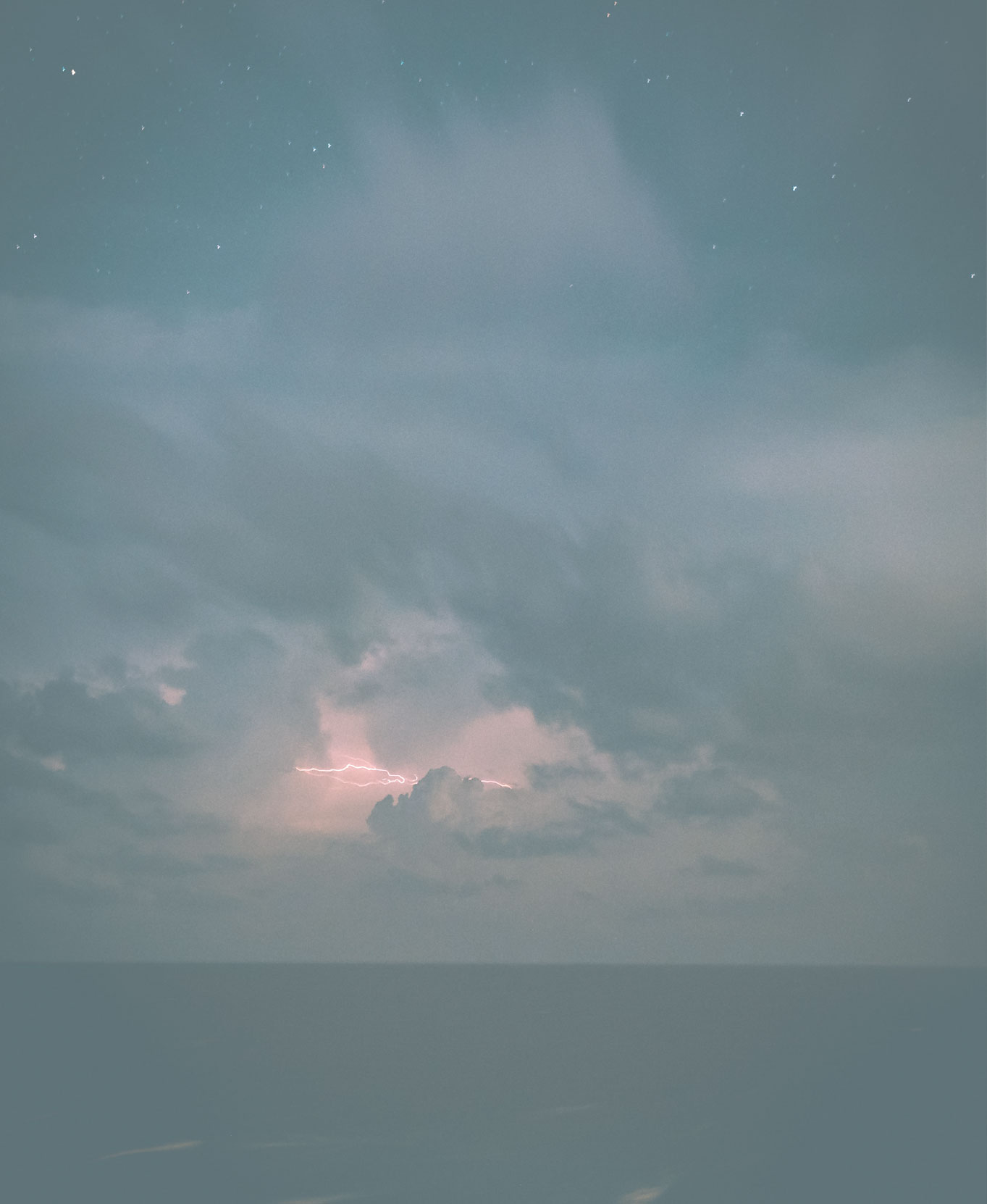
I’ve been through some storms in my life which made me feel like my world was coming to an end. It wasn’t what I was walking towards that scared me; it was what I was walking away from. This took me some time, but I learned I wanted to be around people who had the powerful ability and enthusiasm to help me move forward positively.
No matter what the challenge(s) in your life right now, always, be the best you, you can be. Knowledge is power and enthusiasm pulls the switch. Remember the toughest time is just before you break through the clouds. Learn and grow from the thunderstorms that come and go through your life. You will survive. You will move forward. I see you.
AN ARTIST’S JOB
BY: DAINA WHITE
What is an Artist’s job?
Is it to heal another soul through the painting of her words?
Is it to liberate the conscious mind from a limited existence?
Yes, and more.
It is also a healing awakening for herself.
She has a mind that is wide open now thanks to her art.
It can transport her to otherworldly dimensions and a Universe singing with life!
Revel in the way the paintbrush can move her soul, for she is dancing in a river of aqueous pigment!
Her light voices vibration, uttering words, shapes, and newfound sounds.
The colors whirl and glitter in scintillating excitement.
Her art speaks.
Listen to its patterns.
They move deep.
The story of Her arises.
An ocean of trust lay blank upon canvas.
And can you see her Soul?
Wide open and bare.
A Gift to share.
Merge your creative hive.
Feel Her captivate.
Colors create new stories in you.
Have you witnessed Her light?
And have you seen yourself the same?
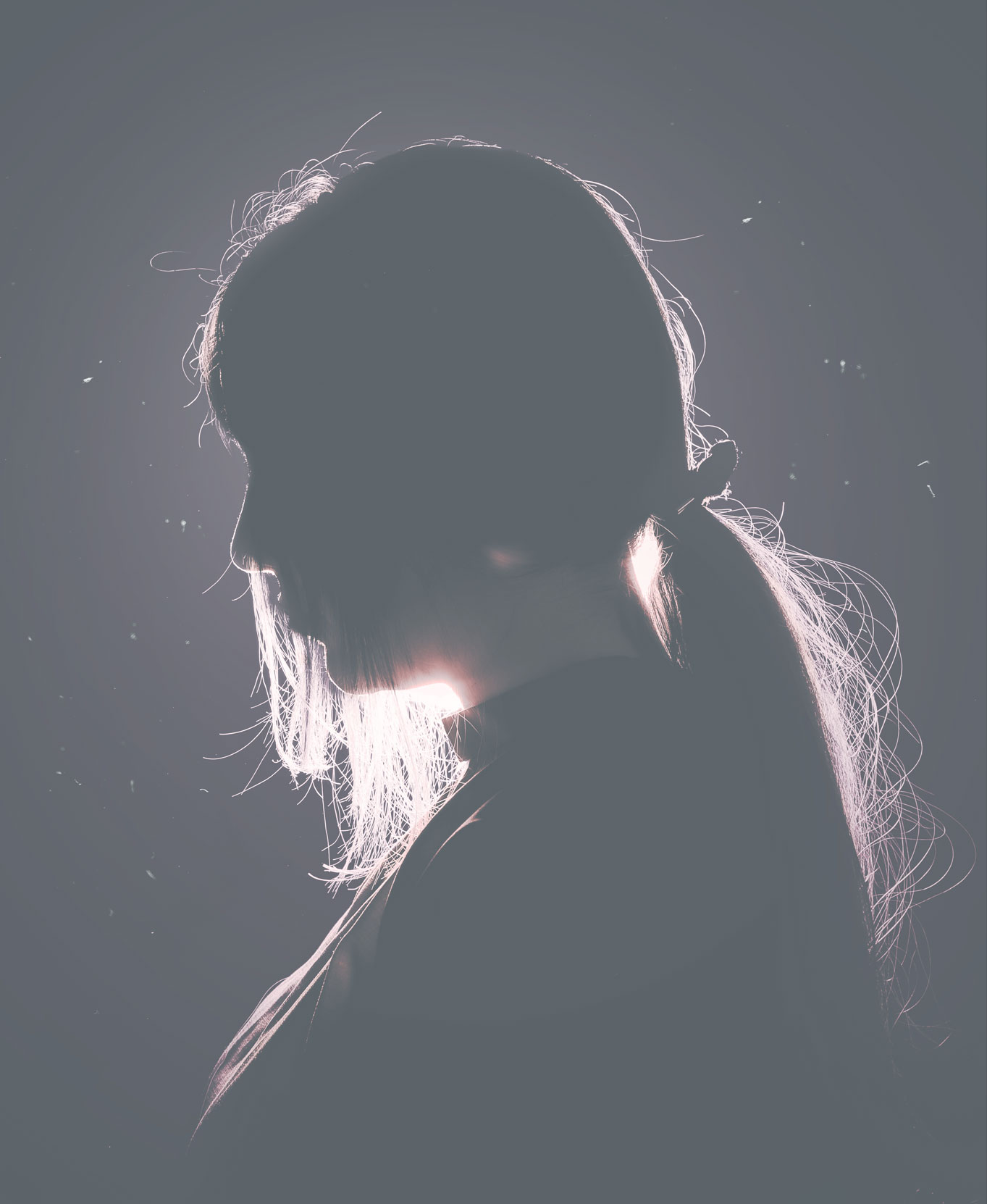
STUDIOWORKS
Angel Gallery
Enjoy some beautiful angels from our Community of Artists! I hope these brighten your day and bring you comfort…
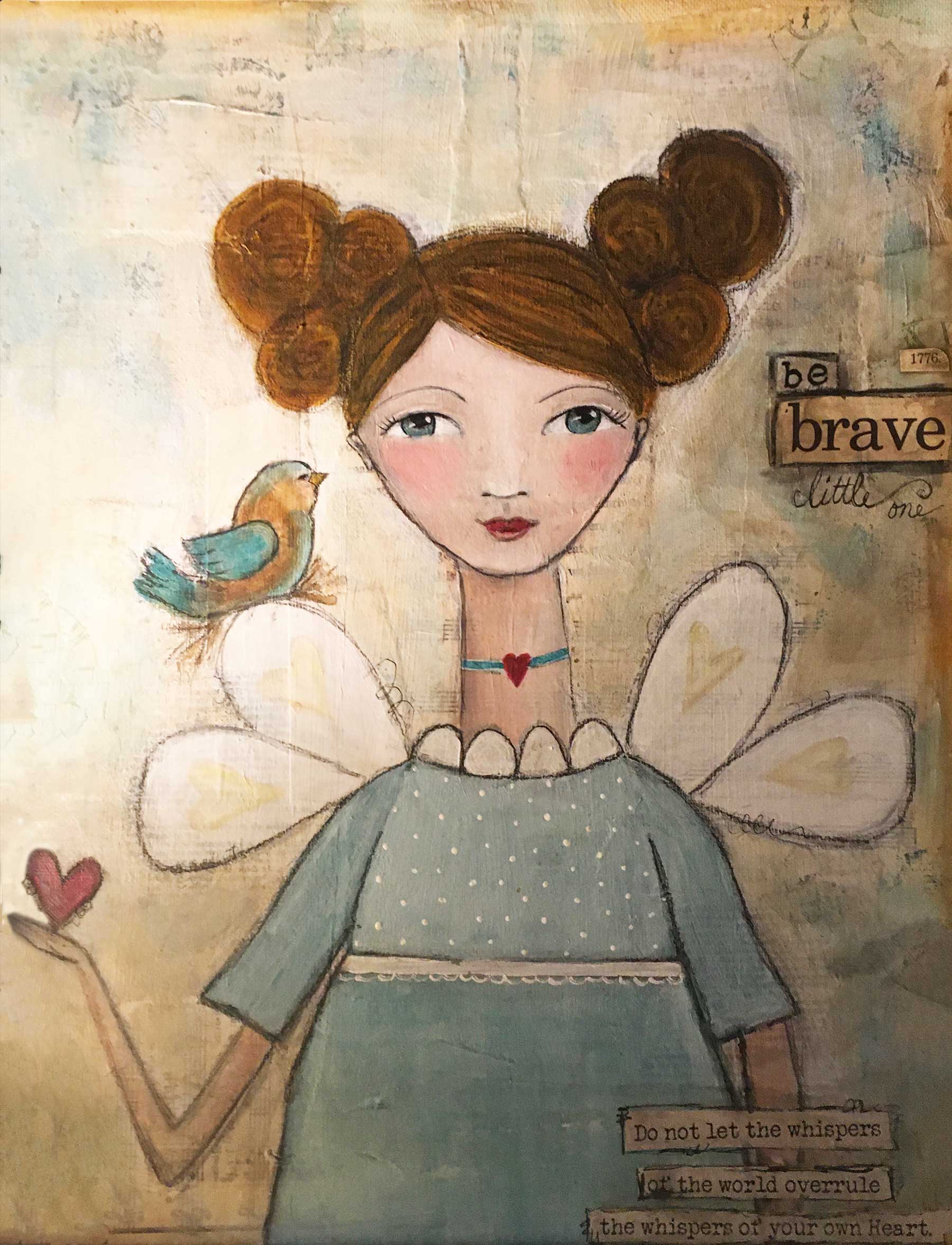
BRAVE GIRL
BY: JEANIE DICKINSON
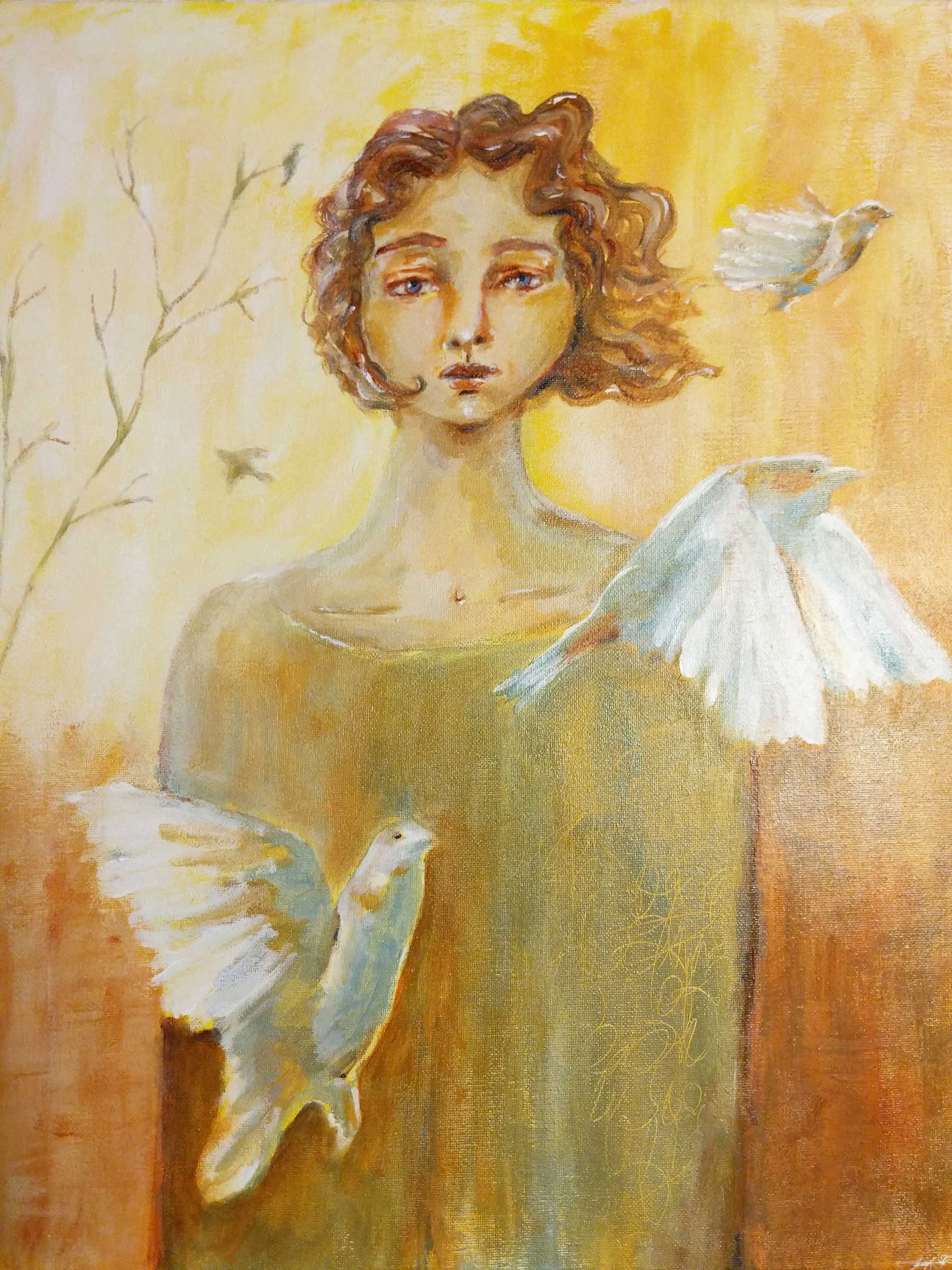
BIRD TOWN
BY: JENNIFER STEVENS
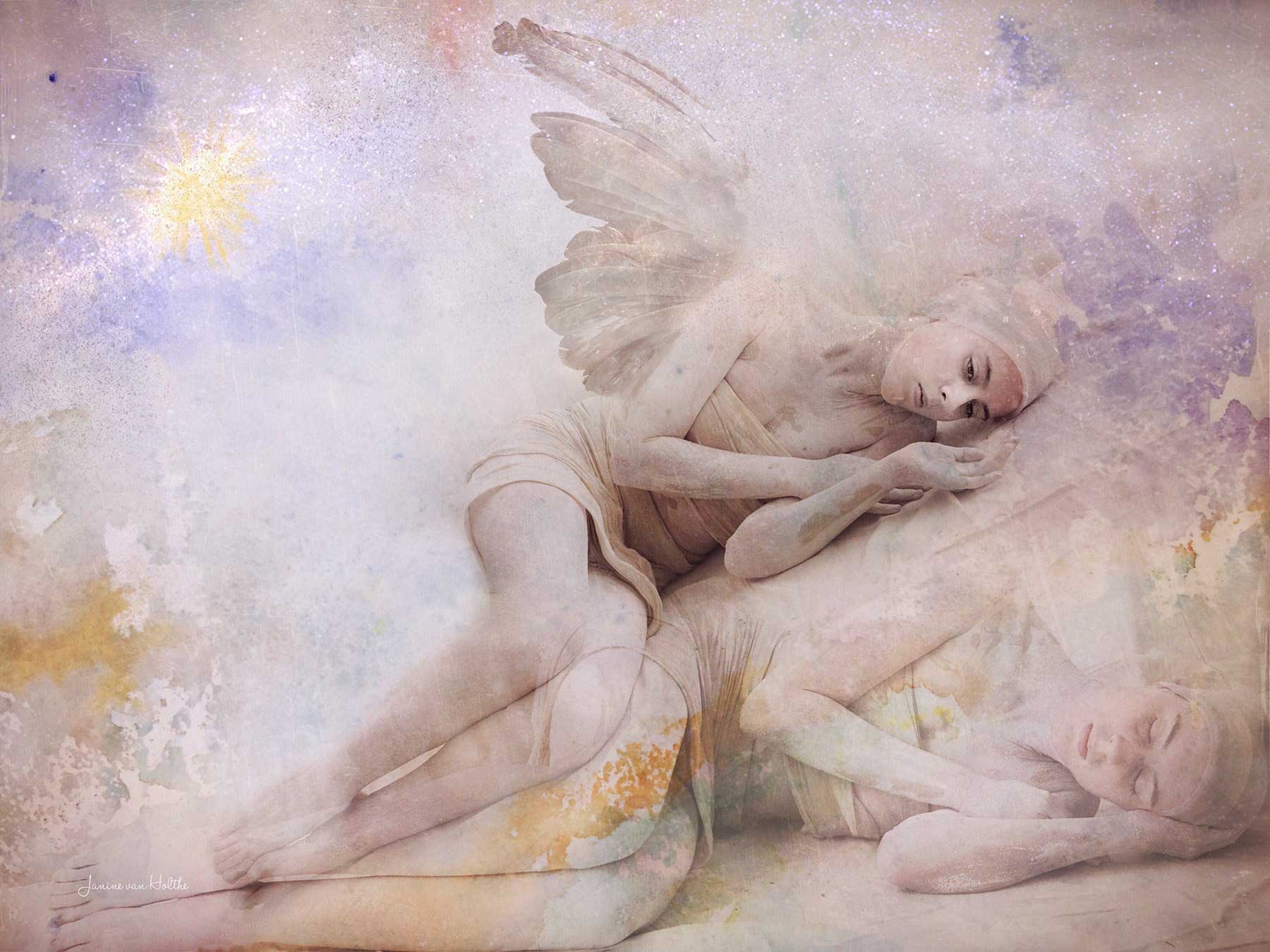
Going home
BY: JOAN GEVAERT & JANINE VAN HOLTHE
STUDIOWORKS
Submission Calls
If you’d like to be featured in an upcoming Studioworks Journal, we’d love to have you join our Creative Network! Our intention with Studioworks has always been to cultivate community involvement and collaboration. Featuring members from our creative community is such an honor and a beautiful way to share the light you all bring. Come join us!
STUDIOWORKS PODCAST
issue sixteen
You can also listen to this month’s issue of the Studioworks journal. I find I love listening to books, podcasts and music while I draw, paint or go on a long walk. Enjoy.
Studioworks : issue sixteen
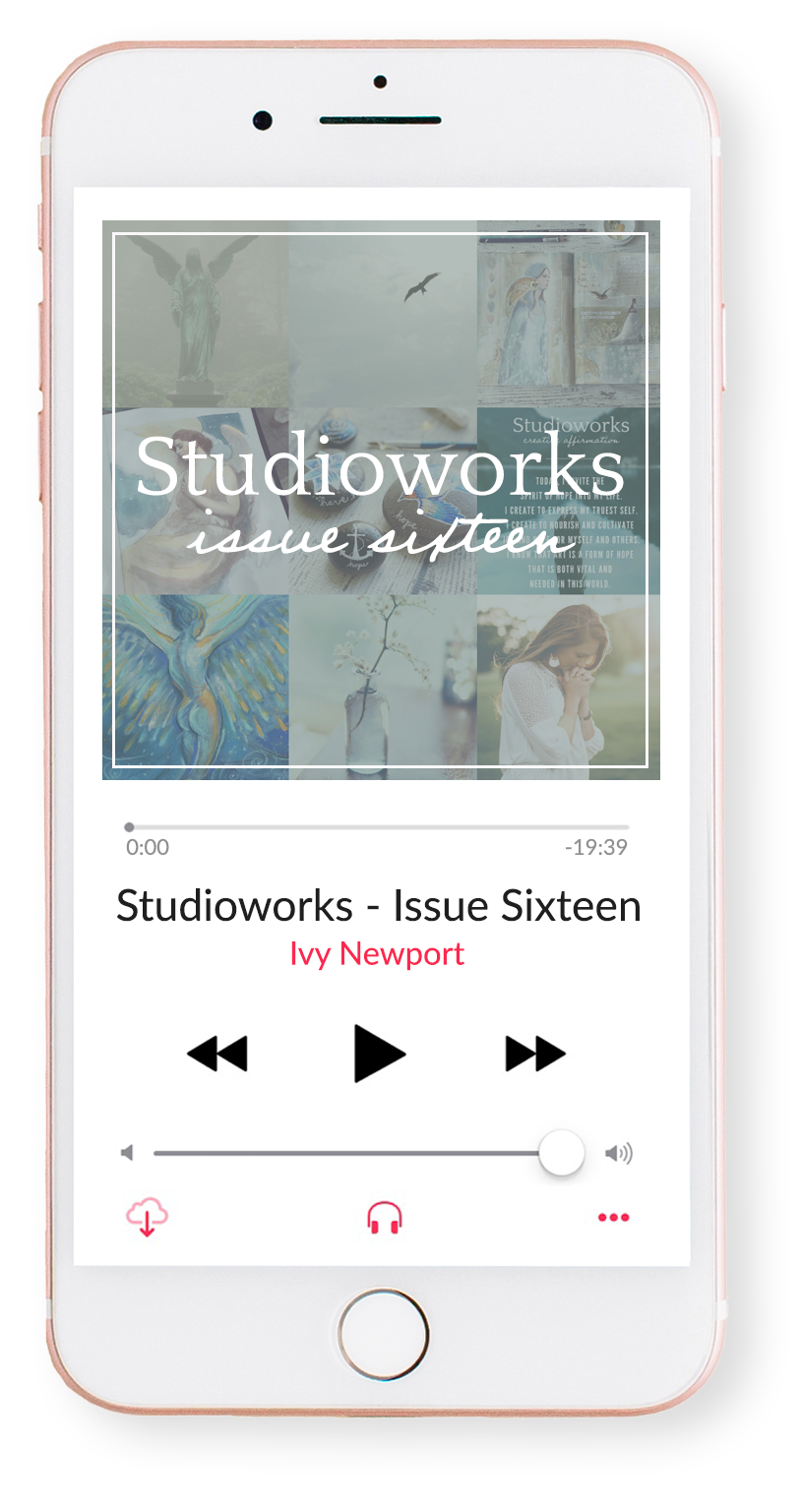
inspiration: curated
One of my favorite things to do is to curate inspiration. From Pinterest boards to books, resources, playlists and more – I love to share anything that might facilitate learning, expansion, and sparks of curiosity! Being an artist, we naturally crave these things so here are some of this month’s picks from me to you.
BOOKS FOR CULTIVATING SELF TRUST
AND EXPLORING ABSTRACT EXPRESSIONISM
MUSIC PLAYLIST
I had so much fun curating this list. I hope you enjoy!!
PINTEREST BOARDS
INTERESTING ARTICLES & VIDEOS TO CHECK OUT
FAVORITE SUPPLIES THIS MONTH
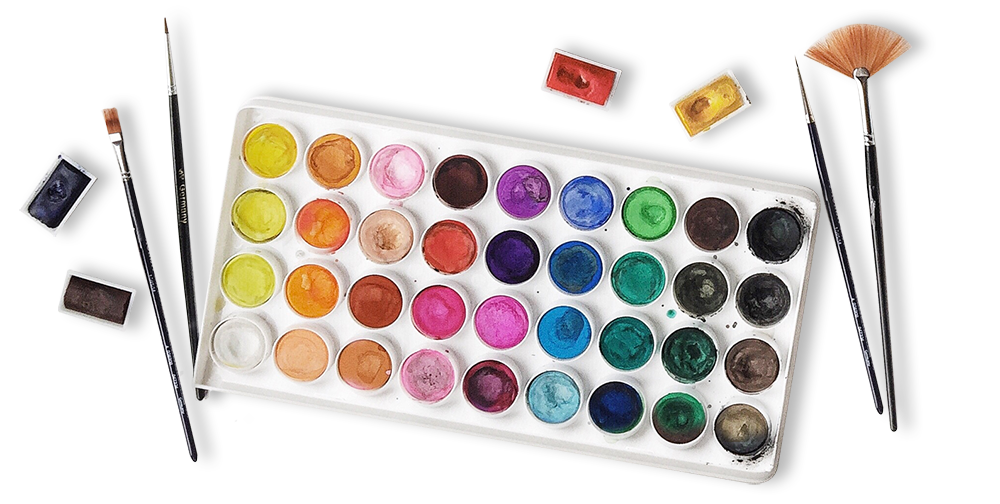
CLASSES TO TRY
These classes carry joy filled learning rooted in nature, art and happiness! I highly recommend checking them out if you haven’t already. Enjoy!

© 2019 IVYNEWPORT, LLC ALL RIGHTS RESERVED.

